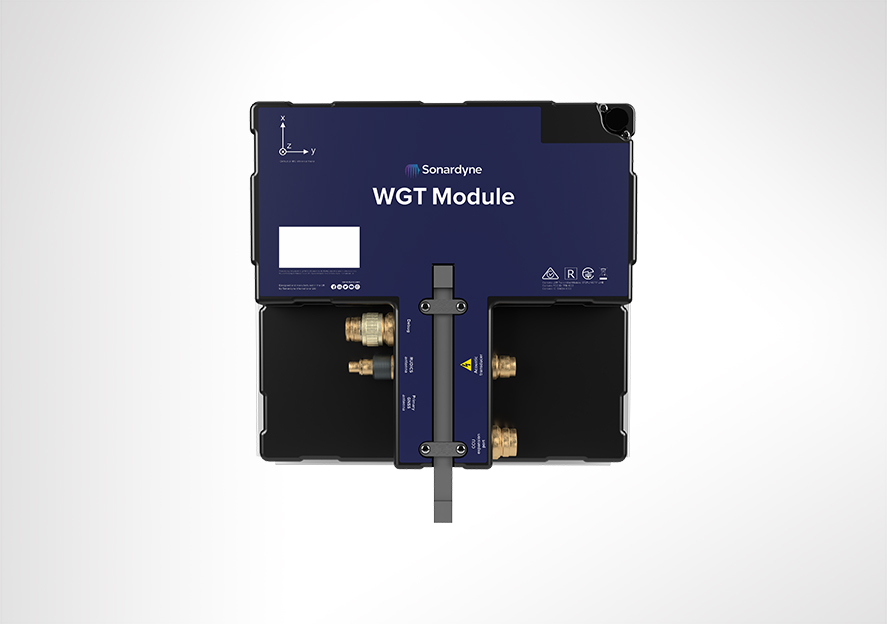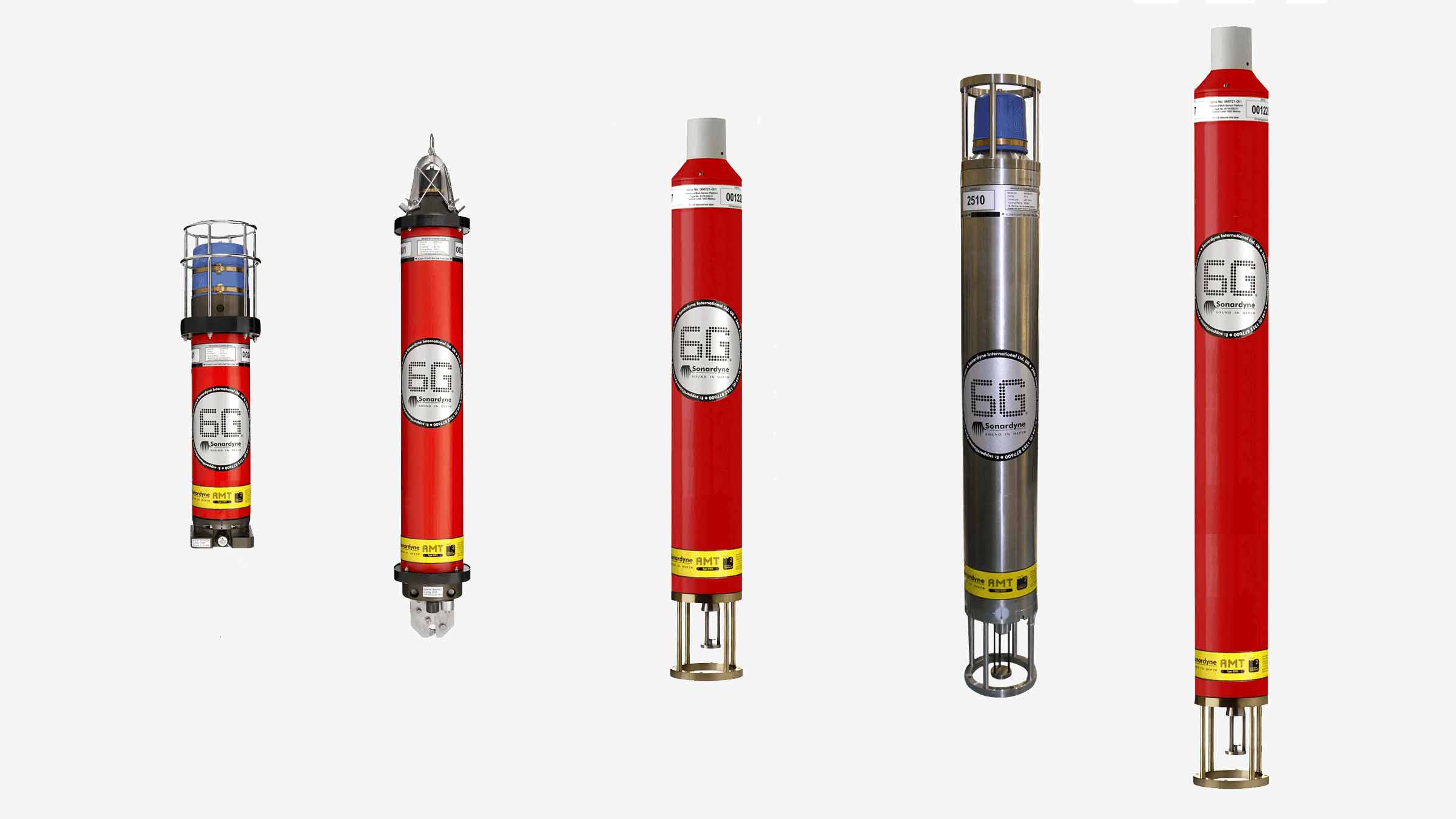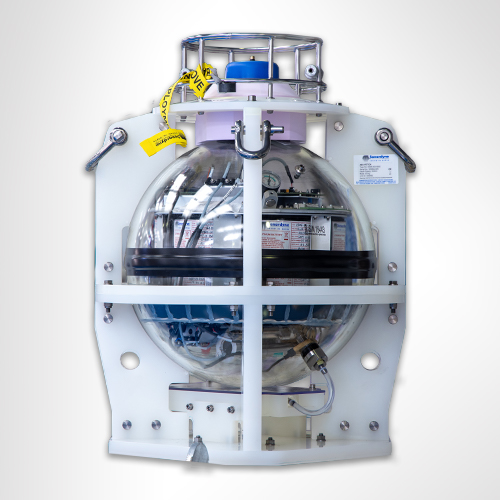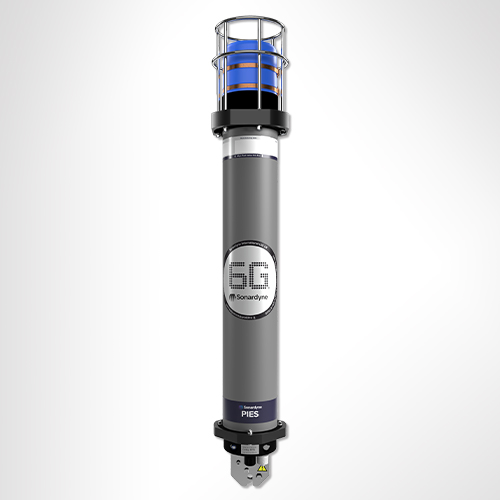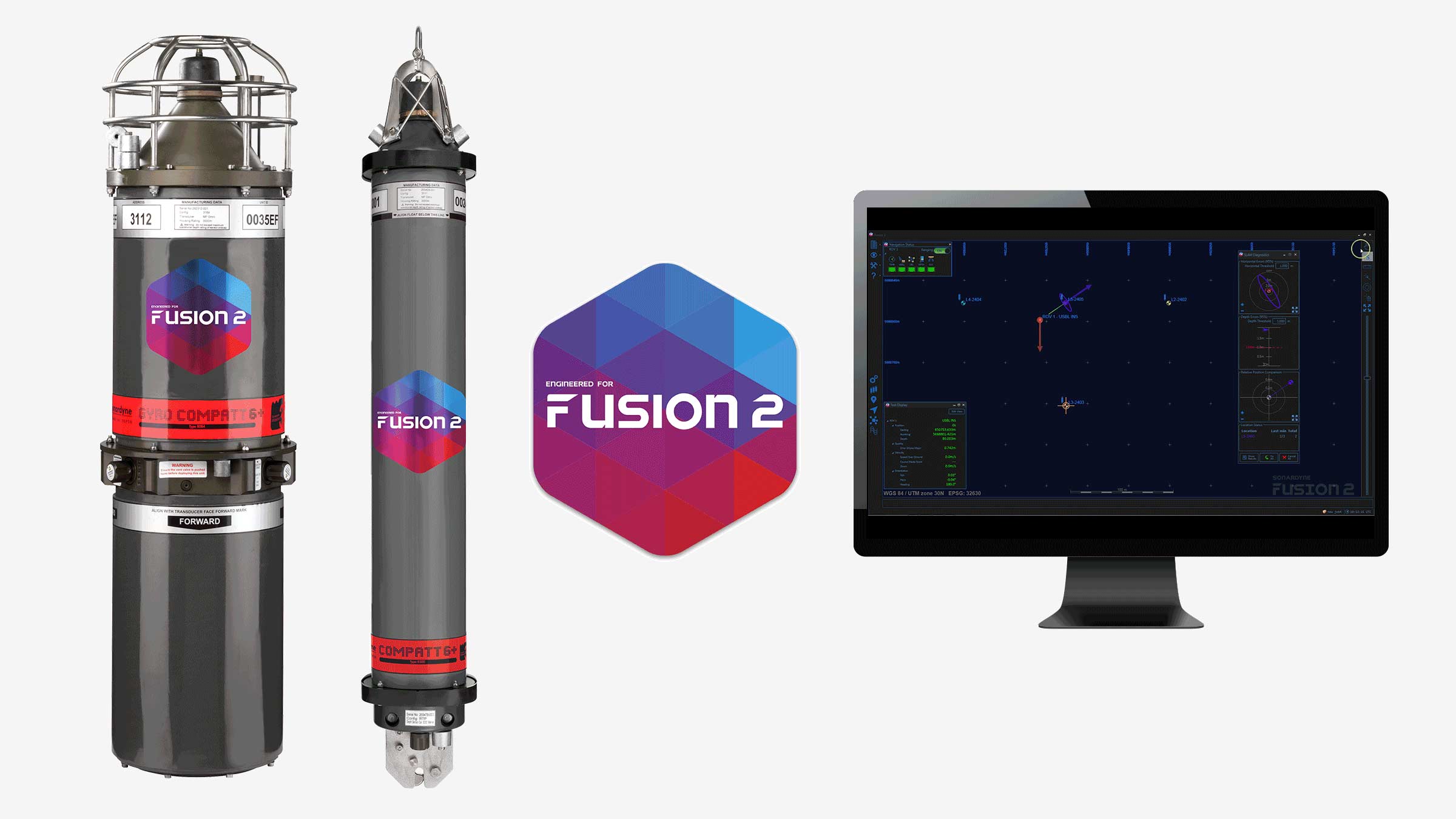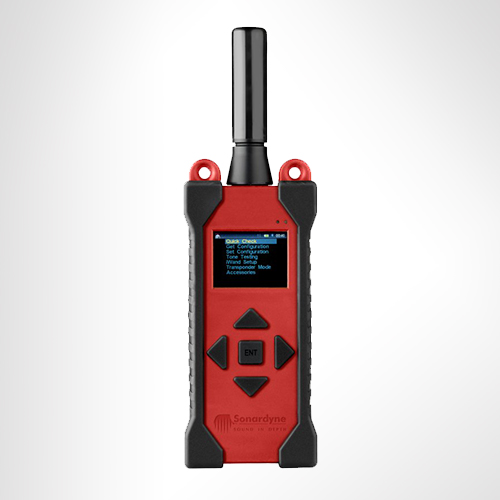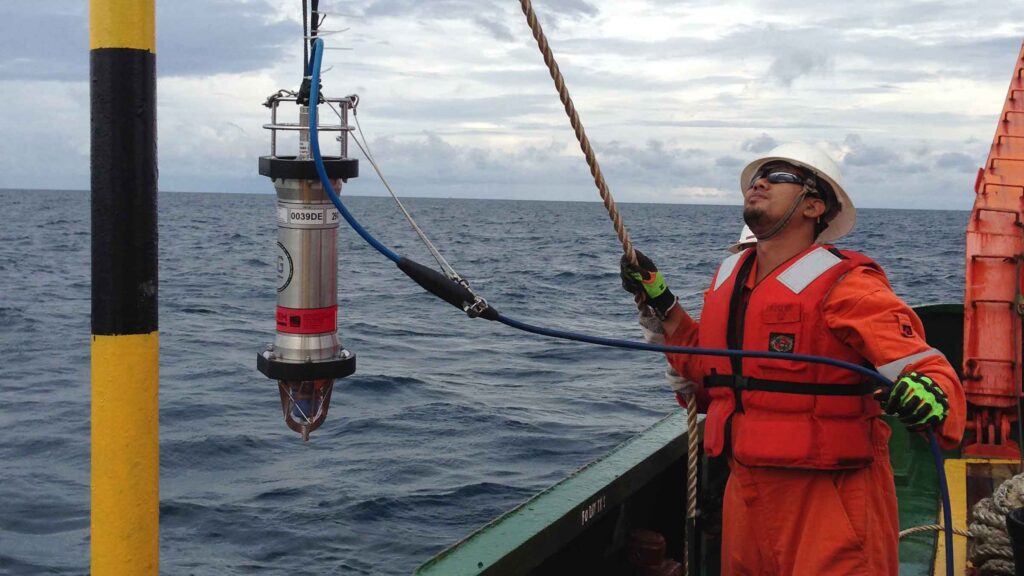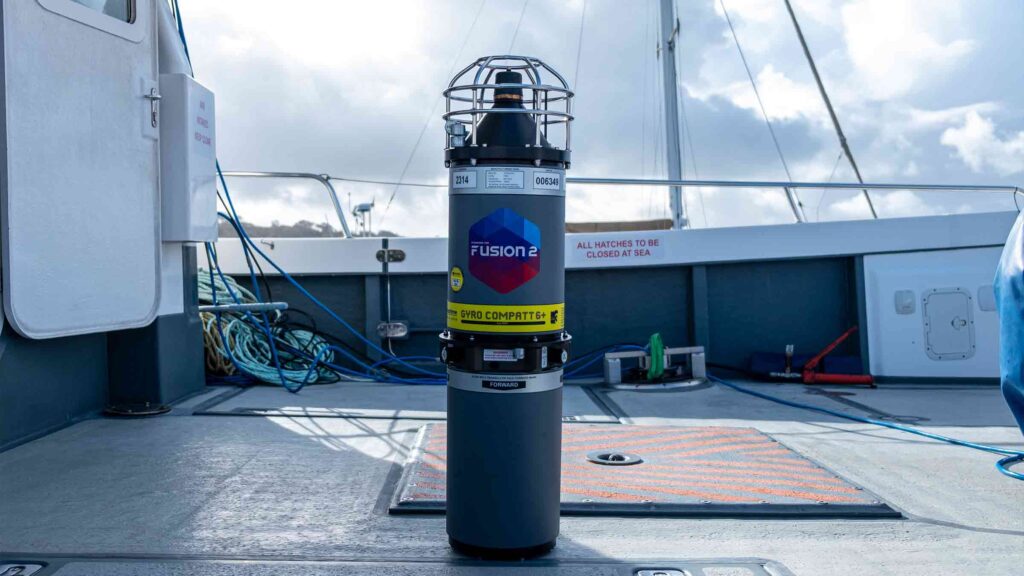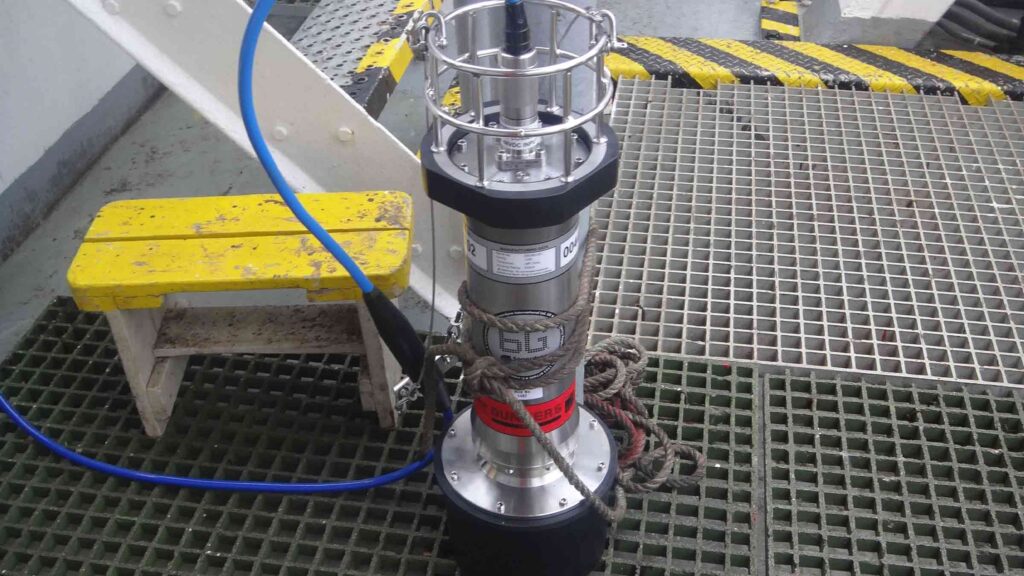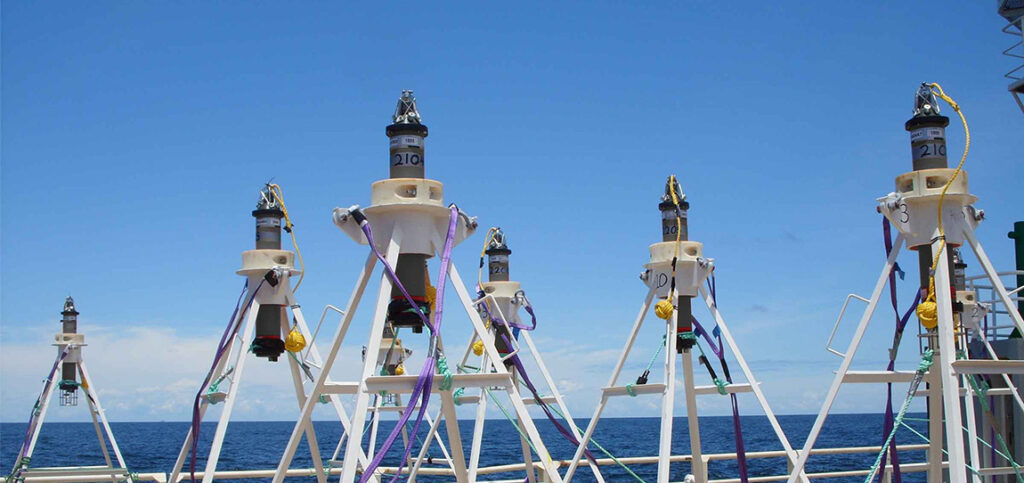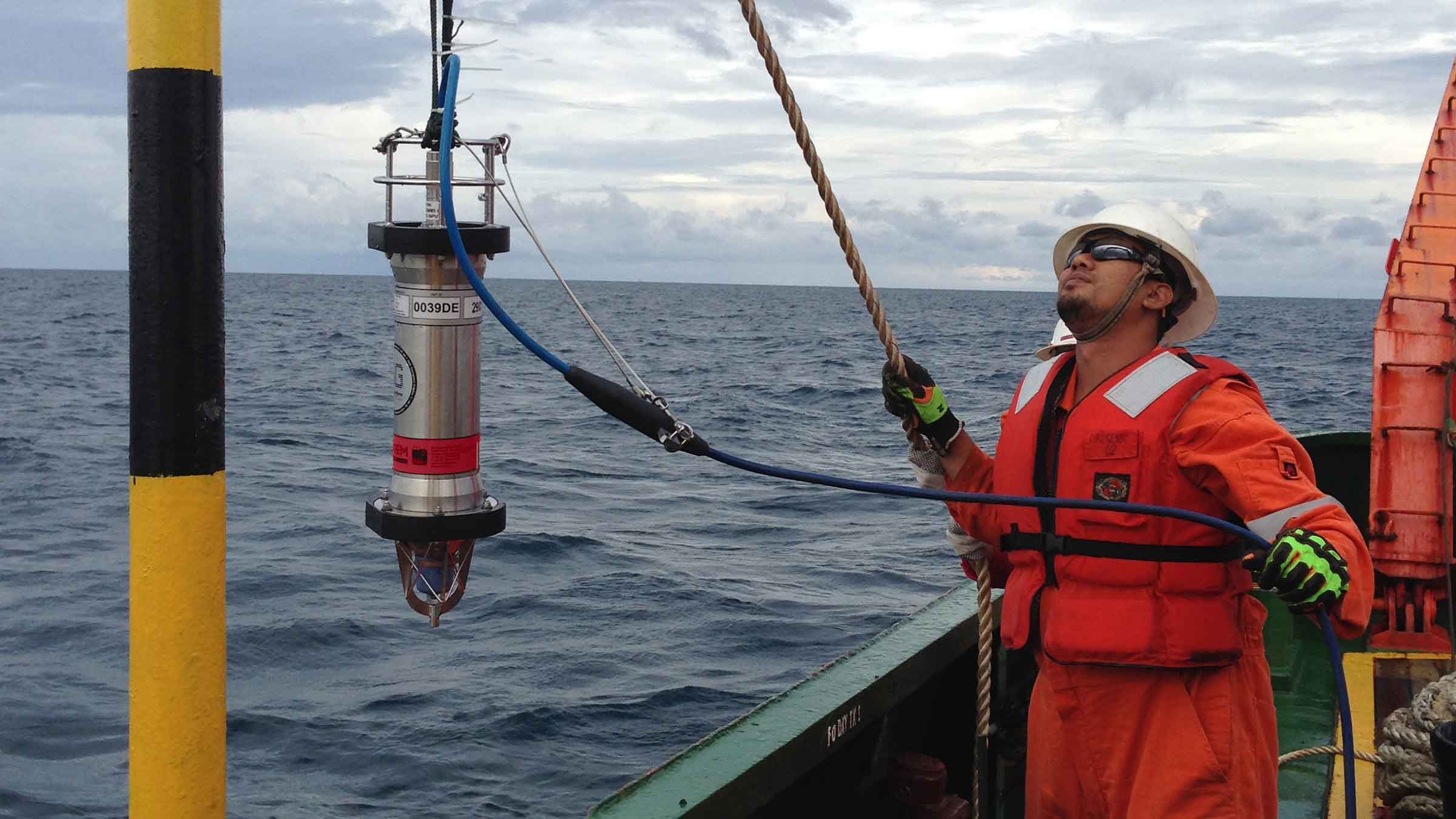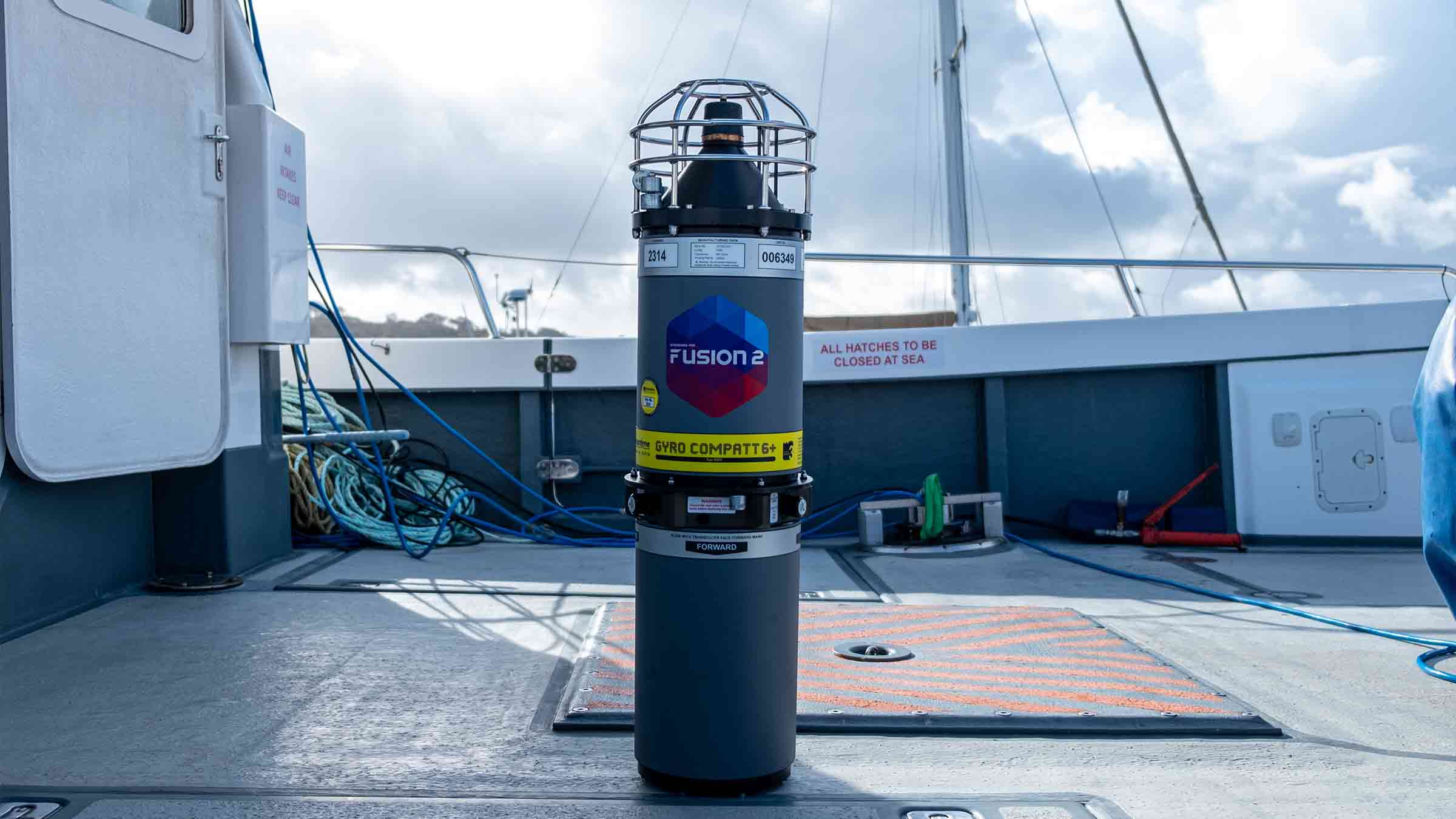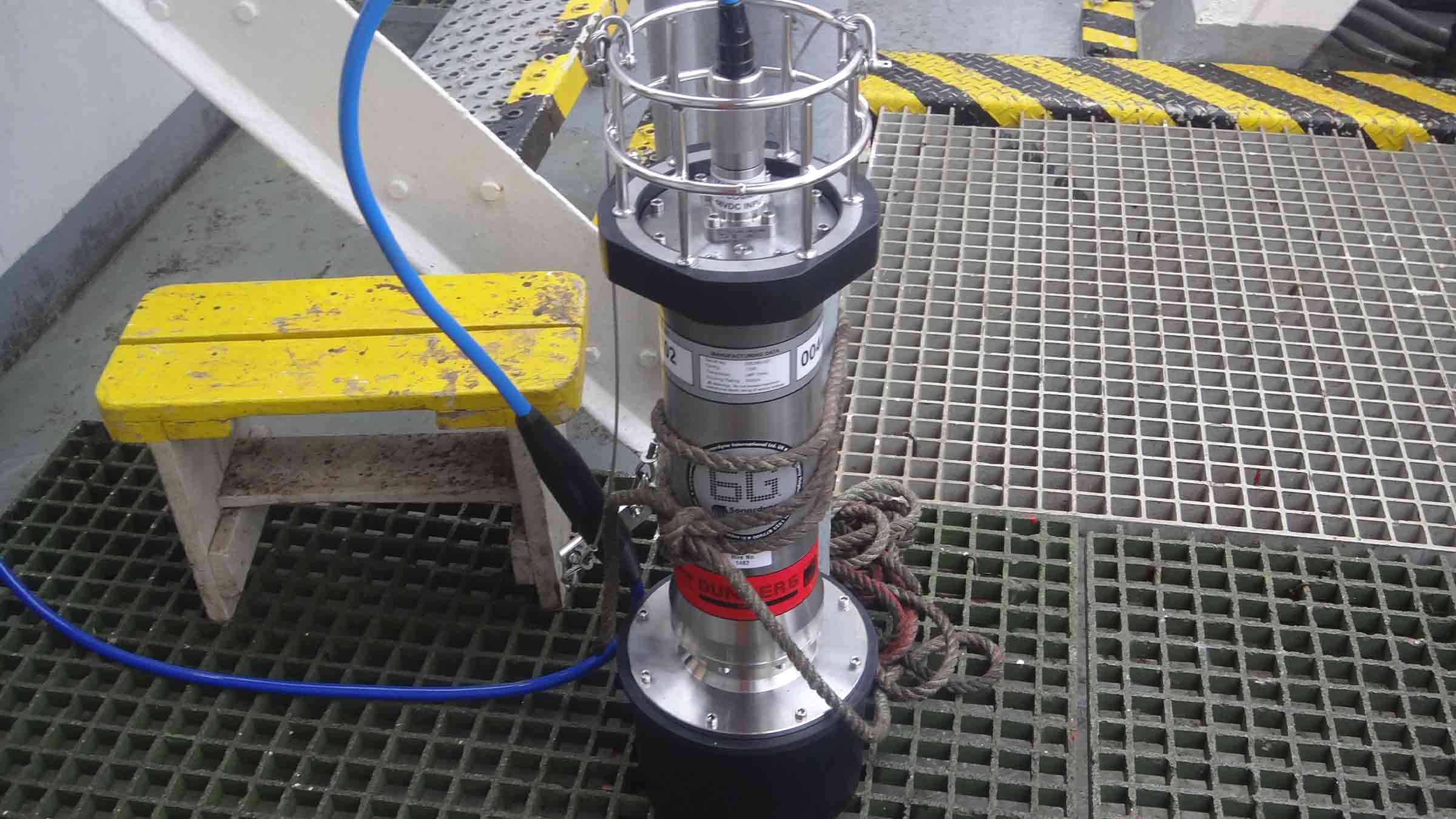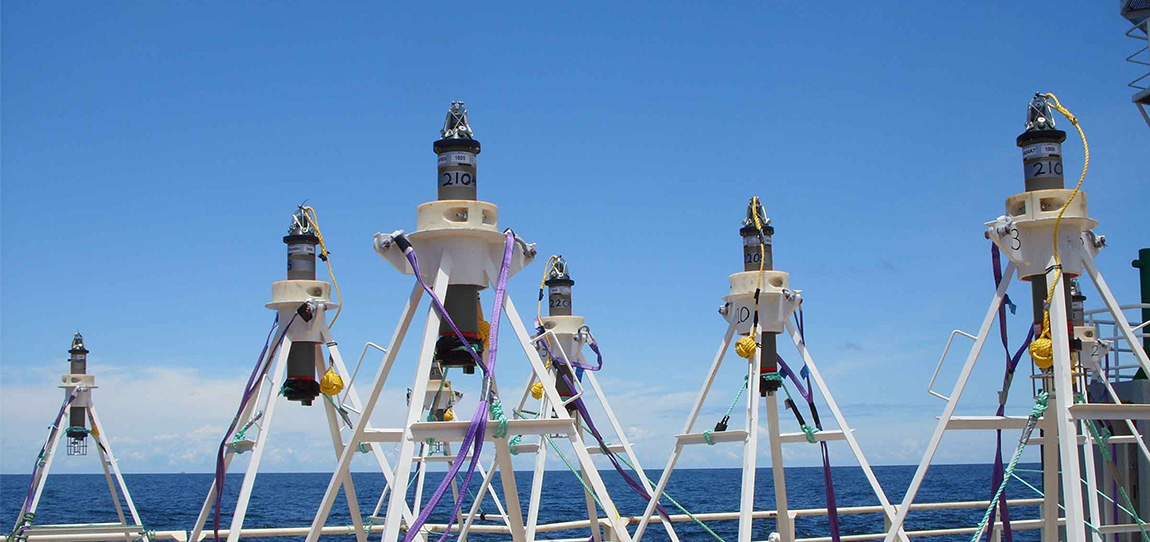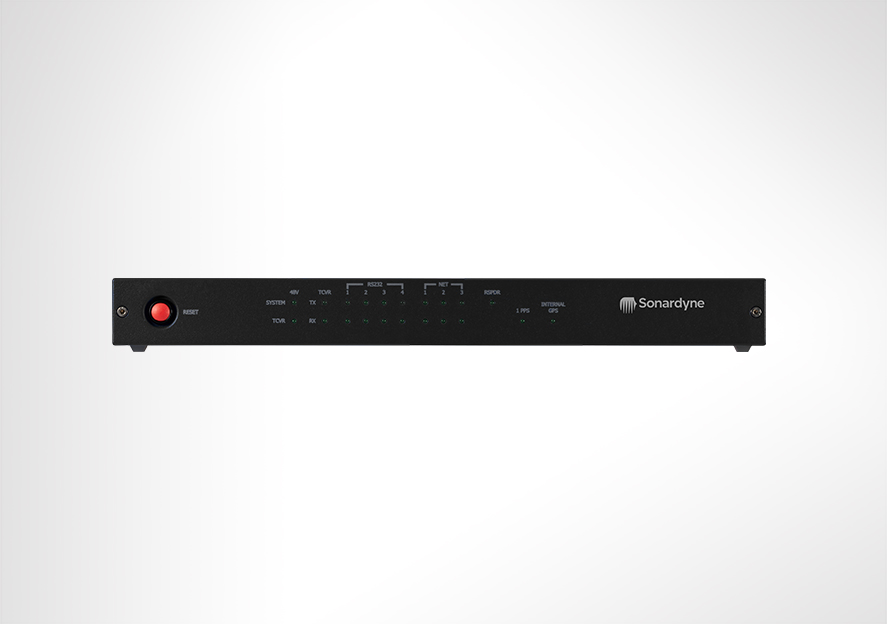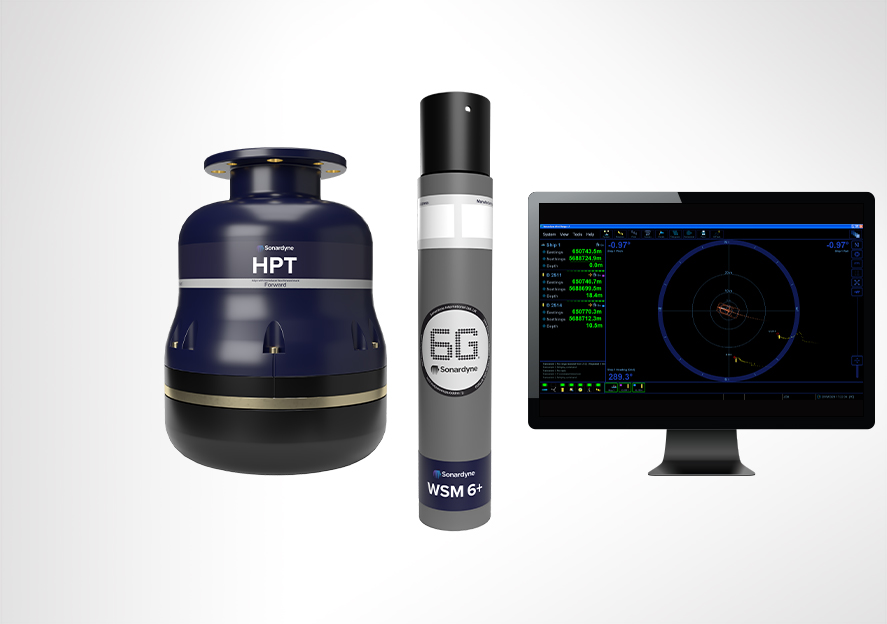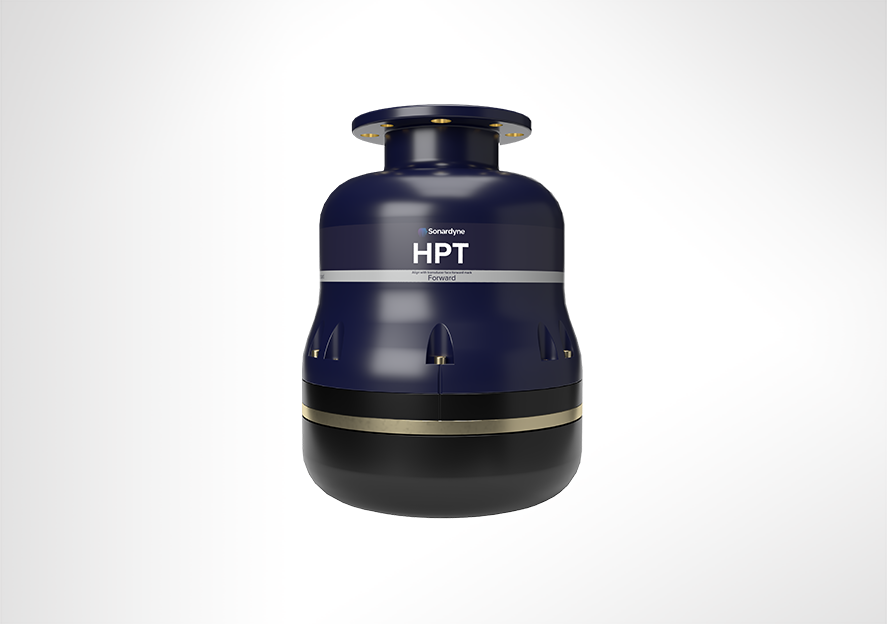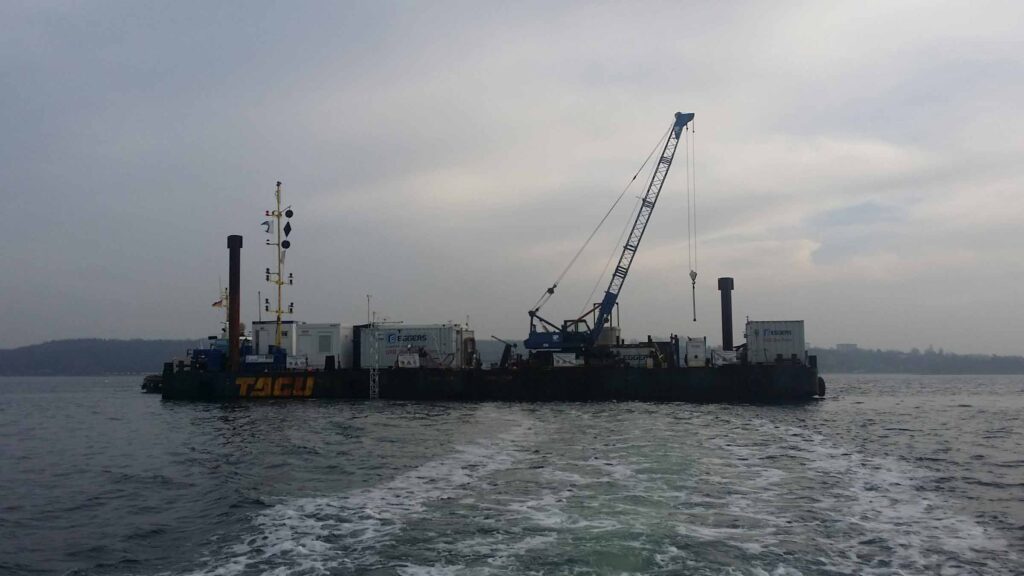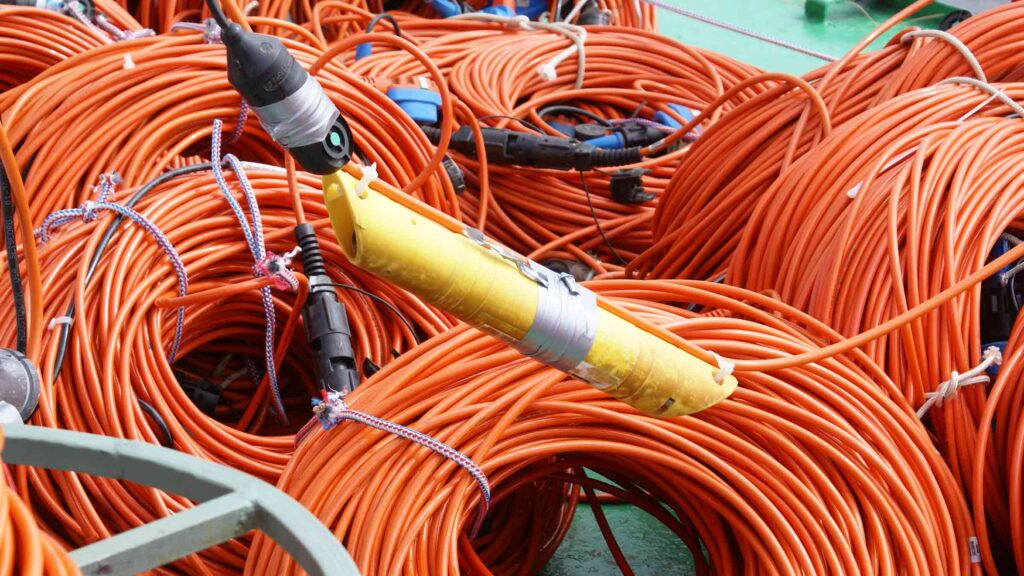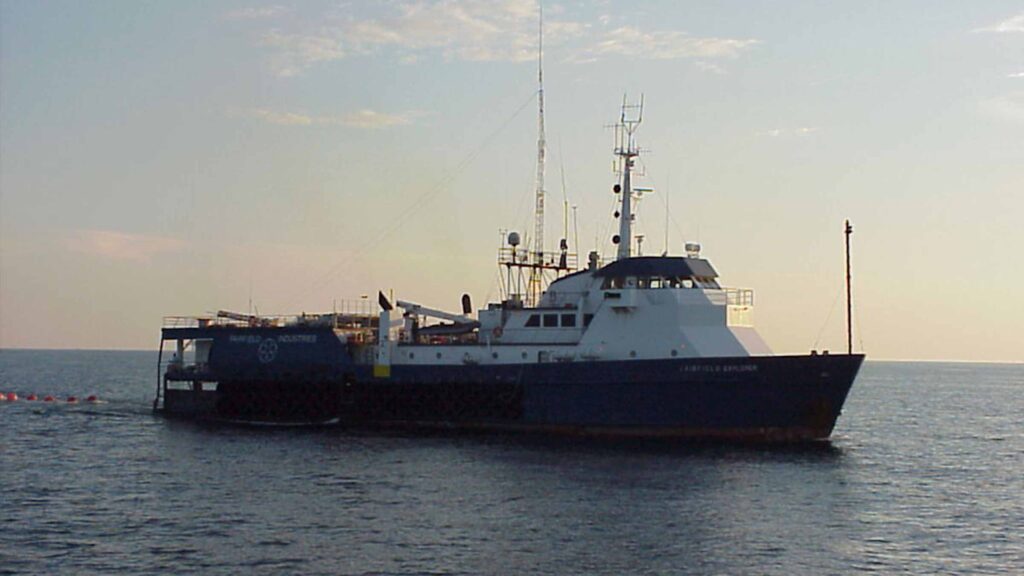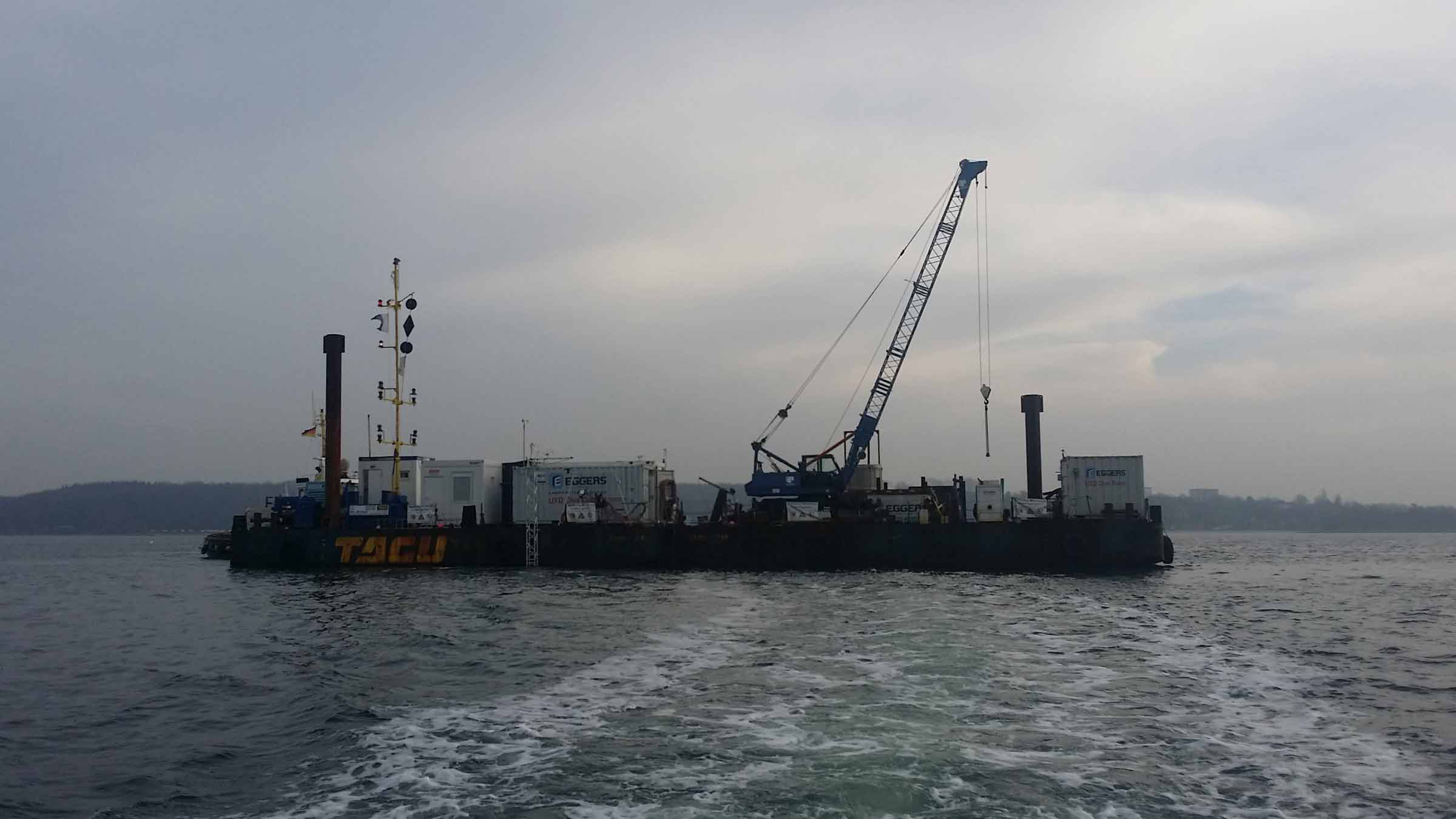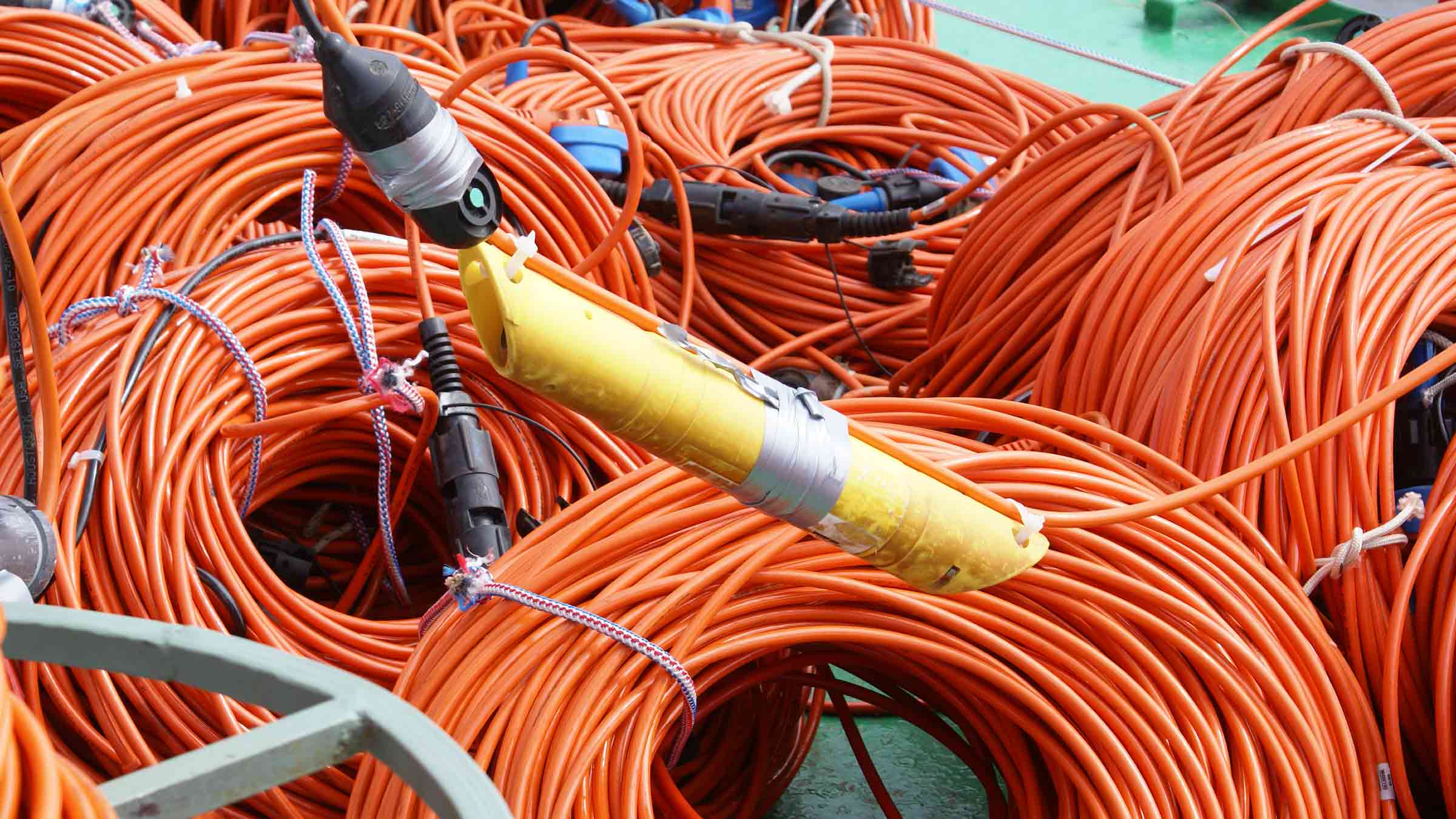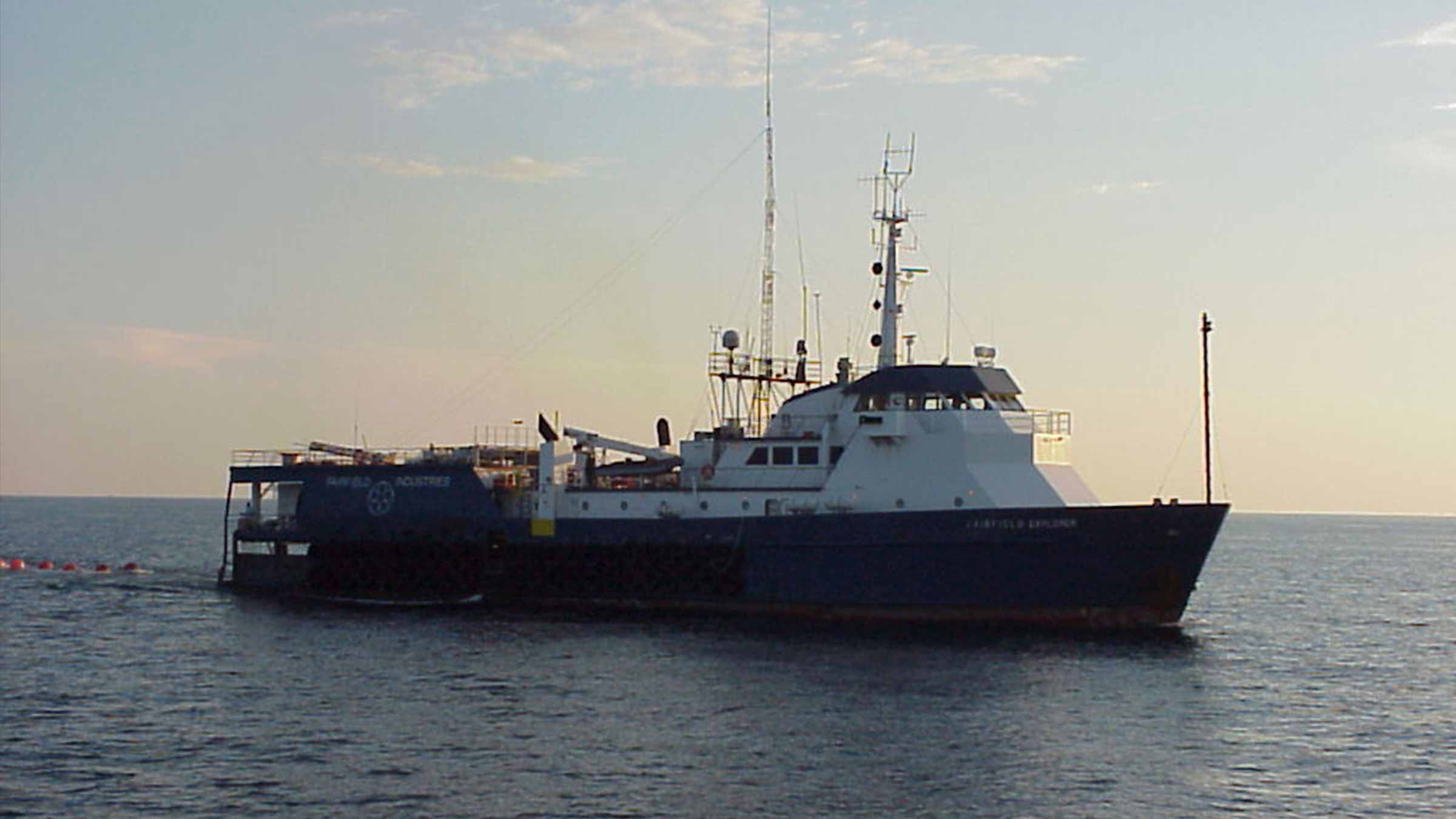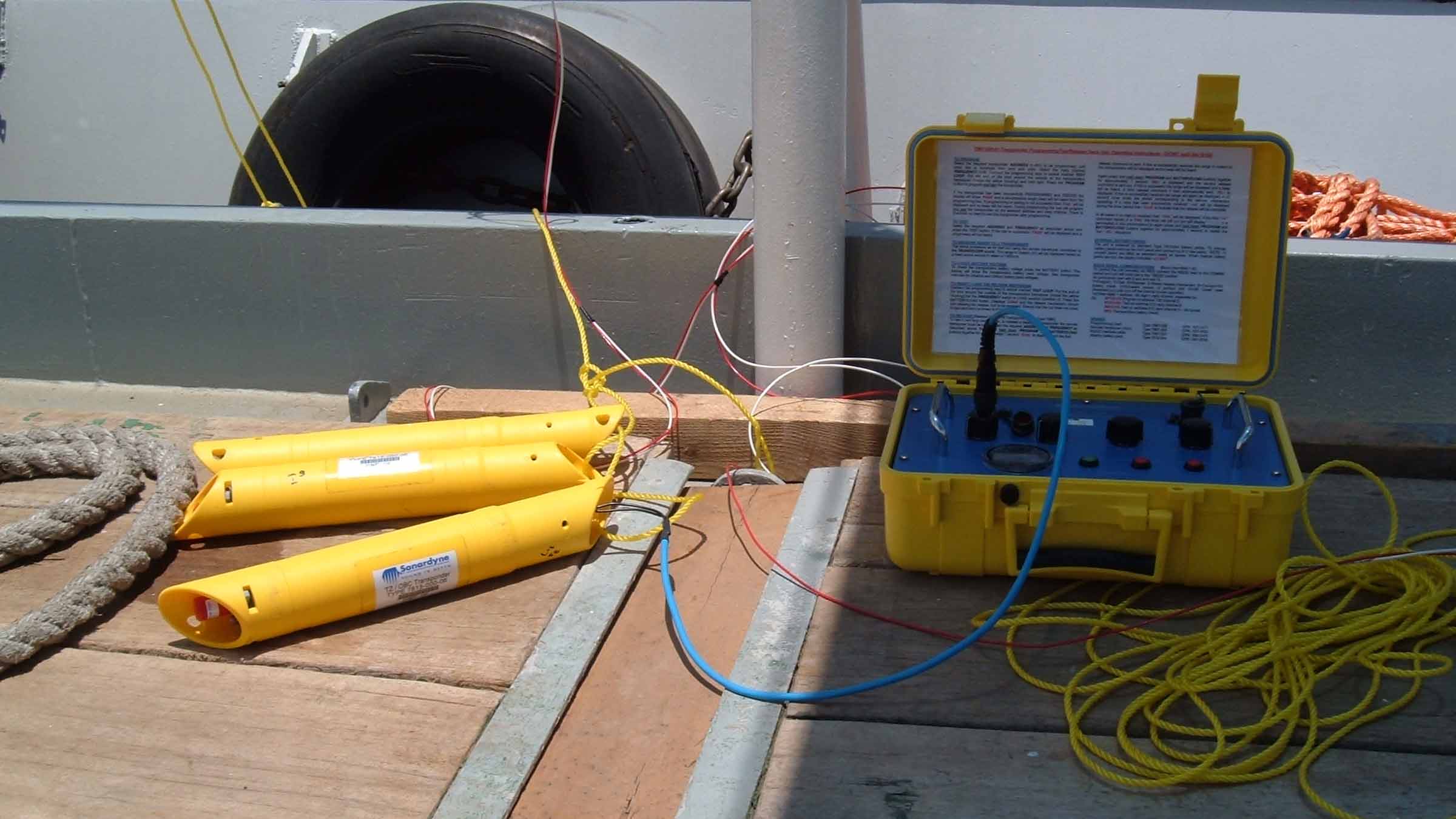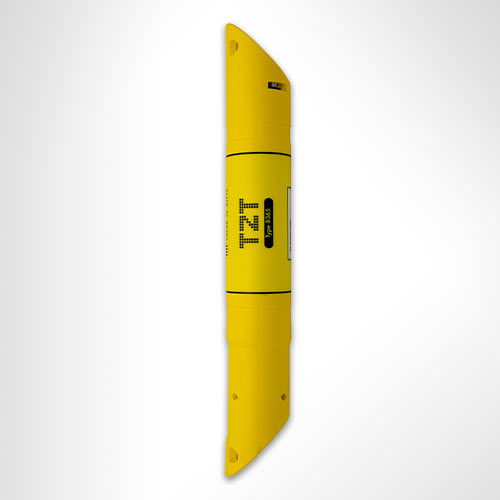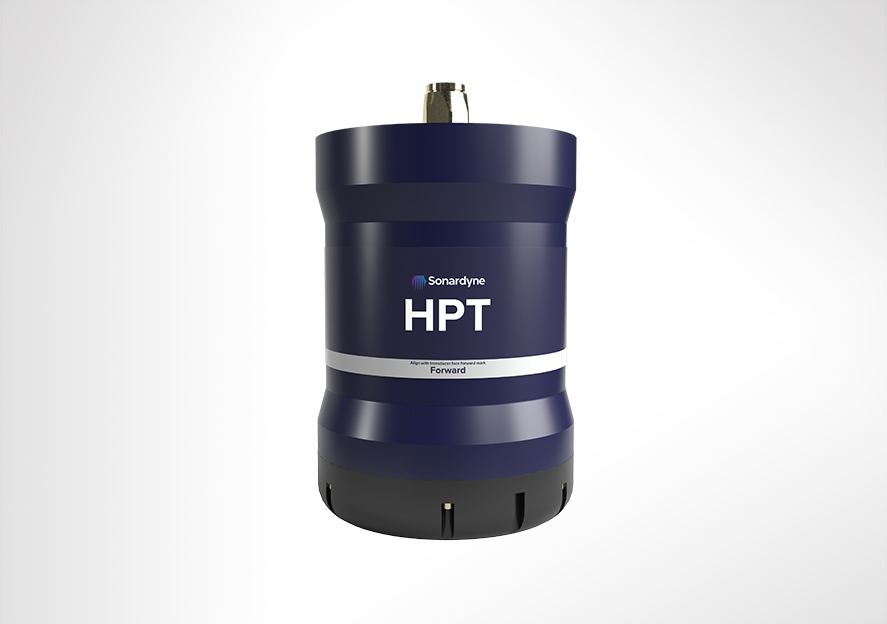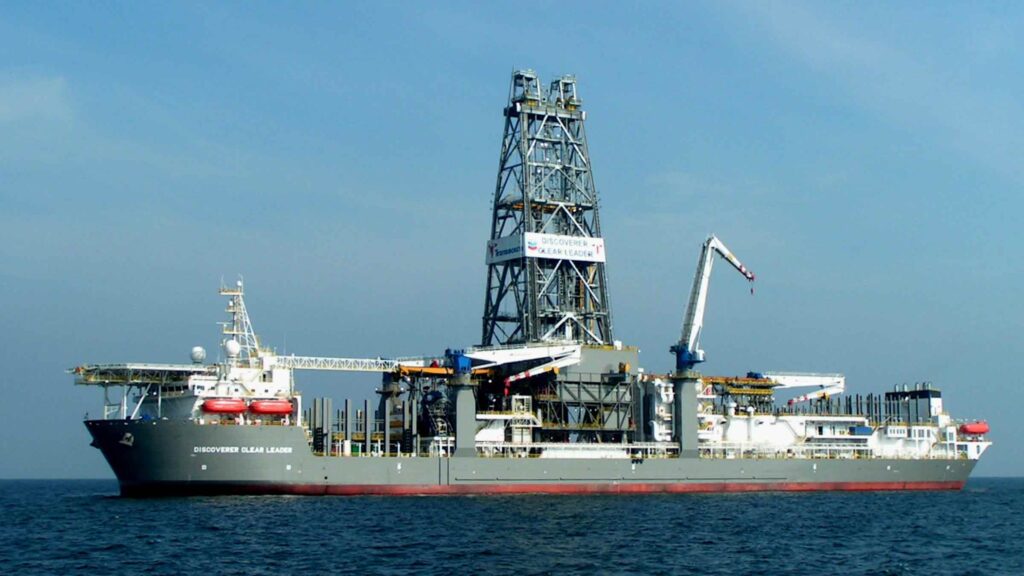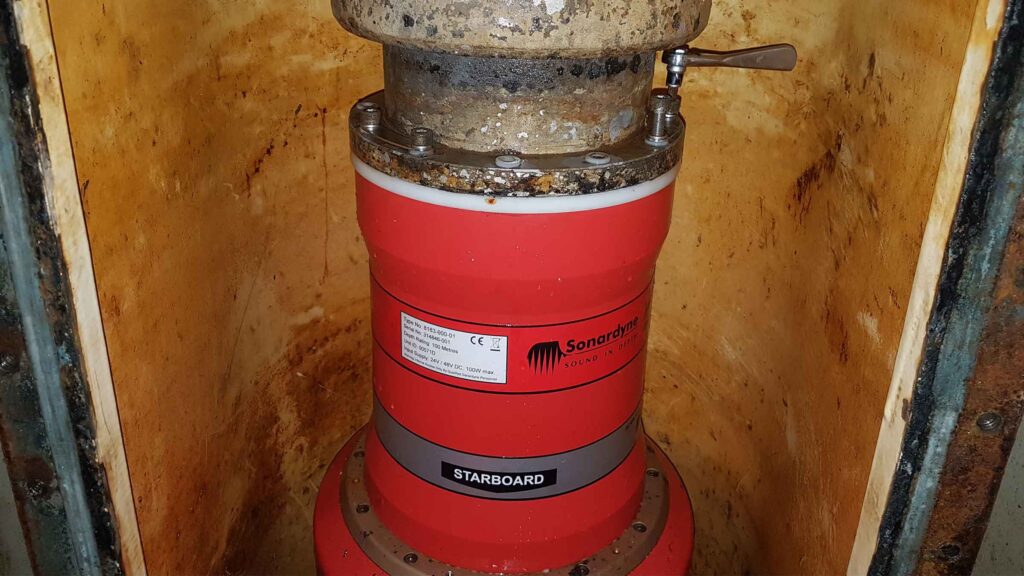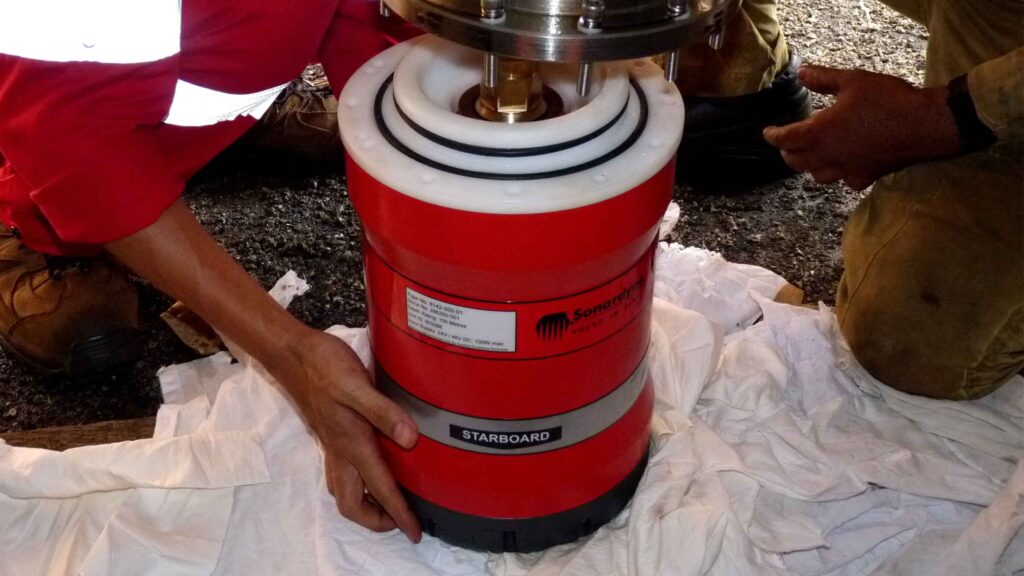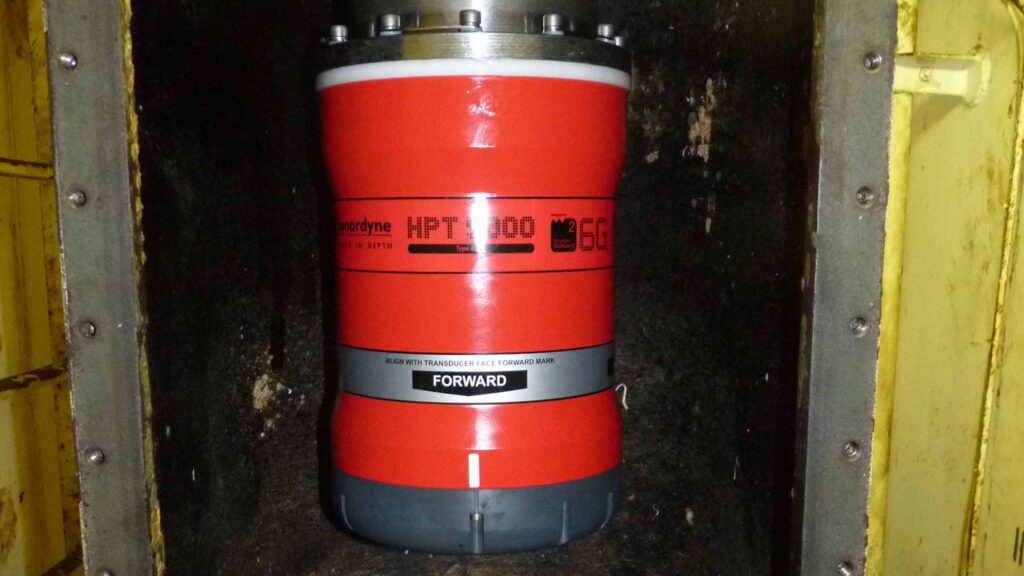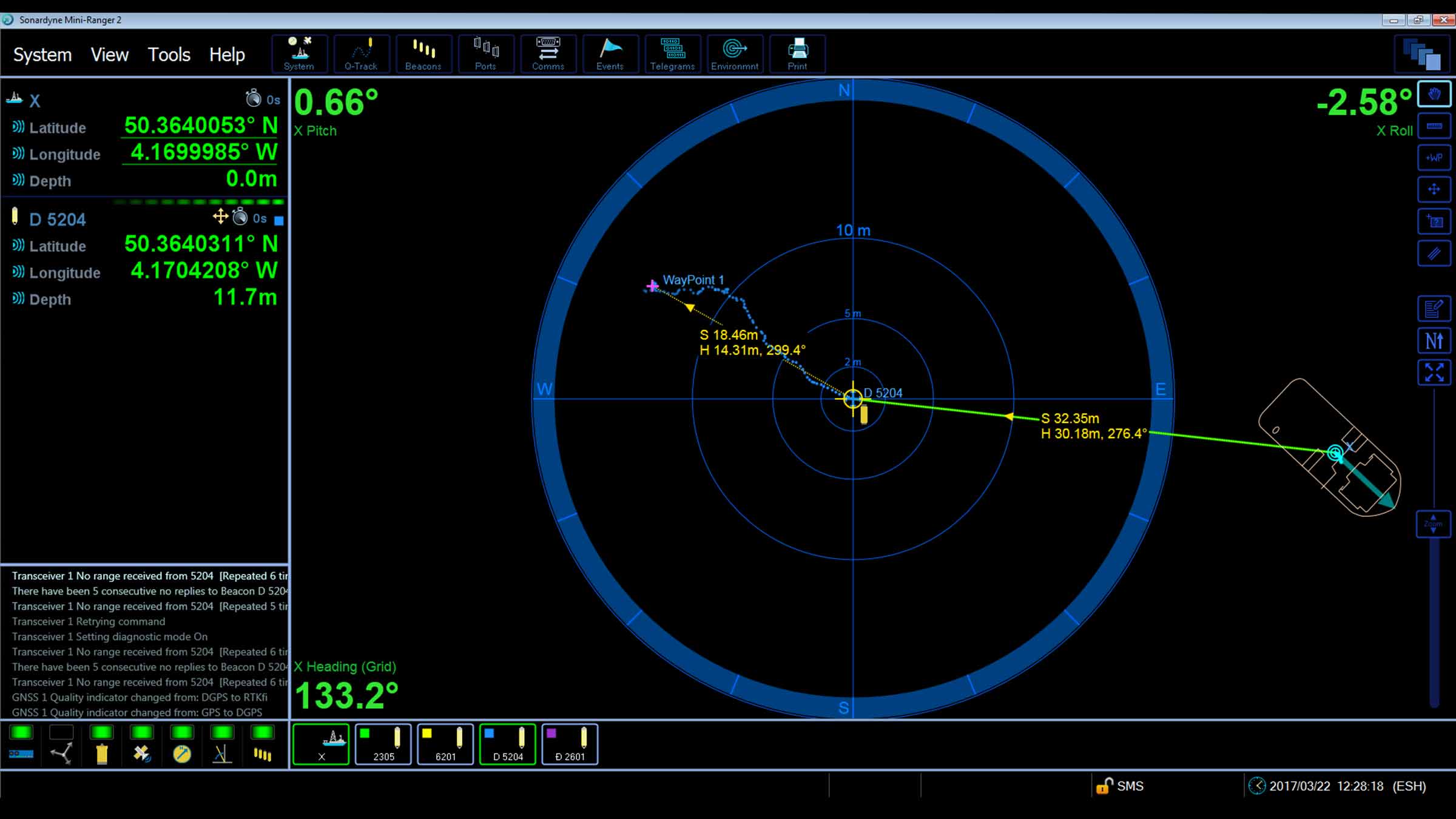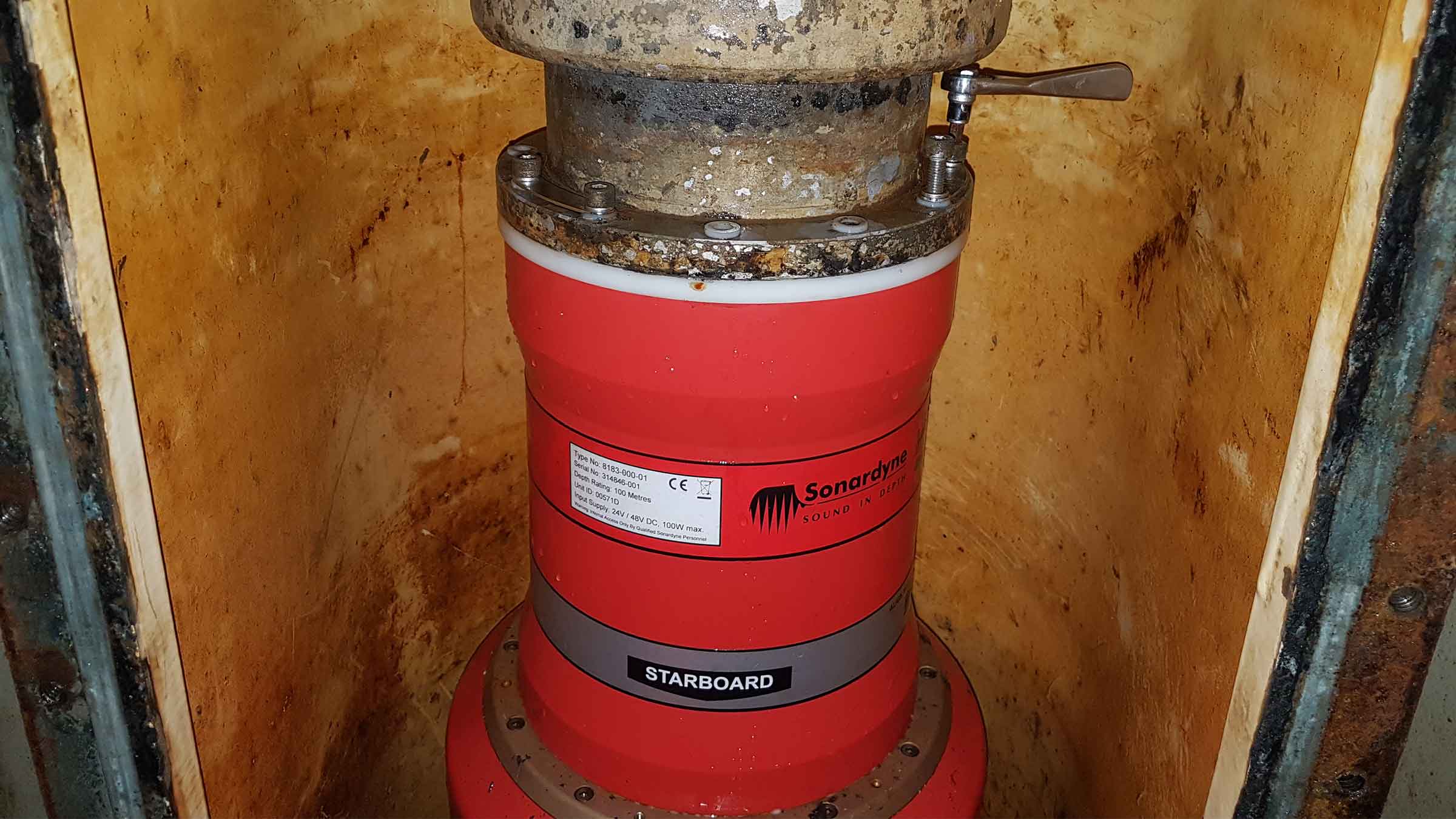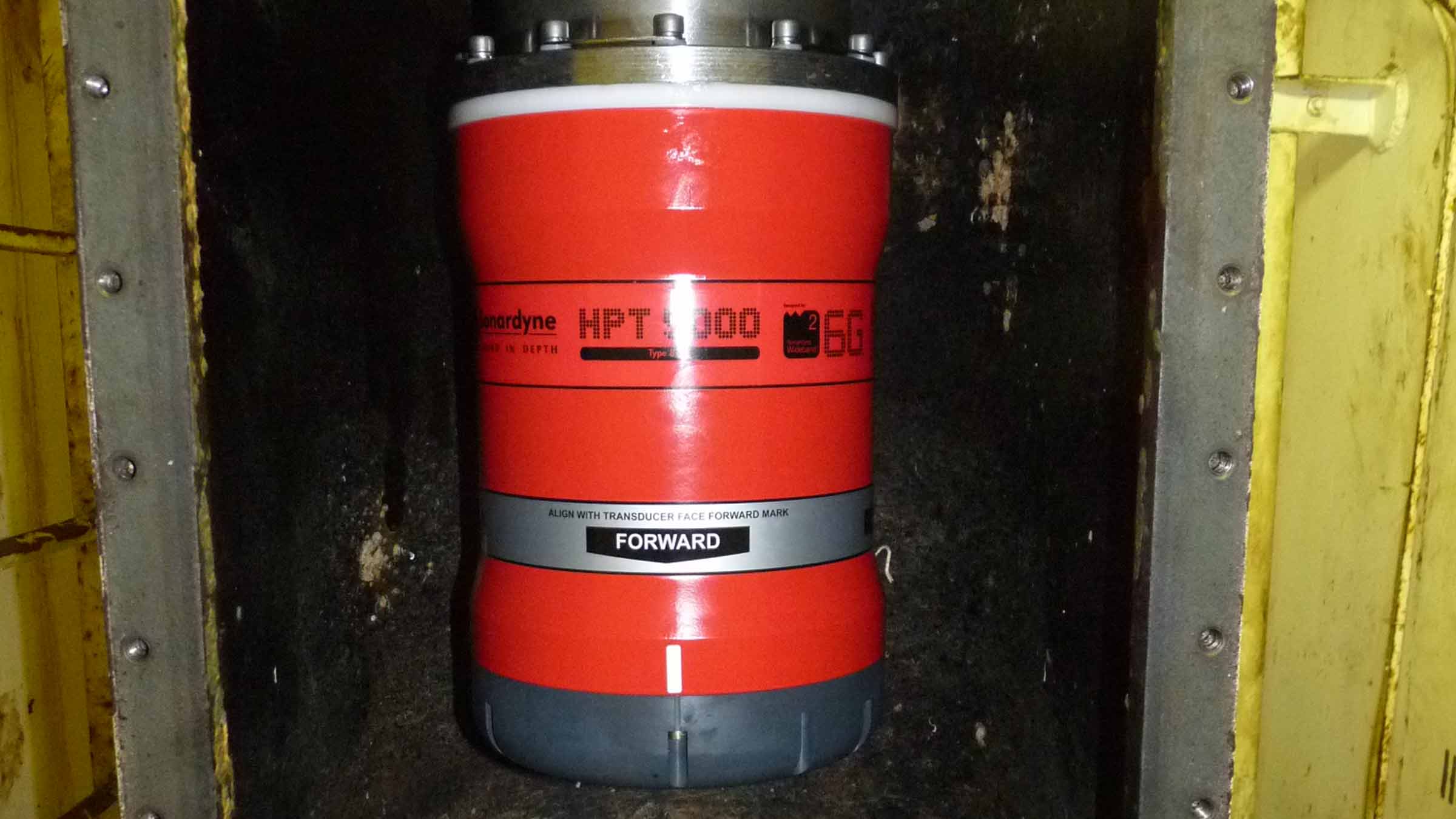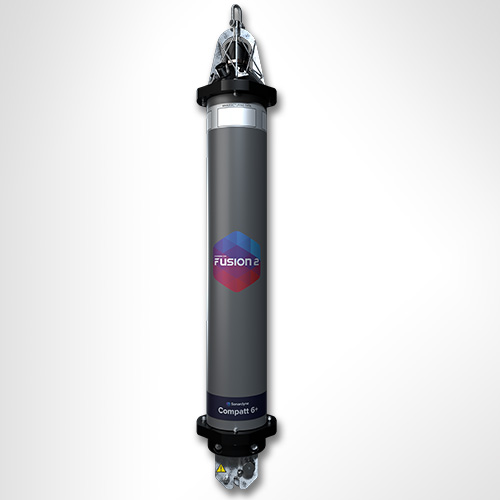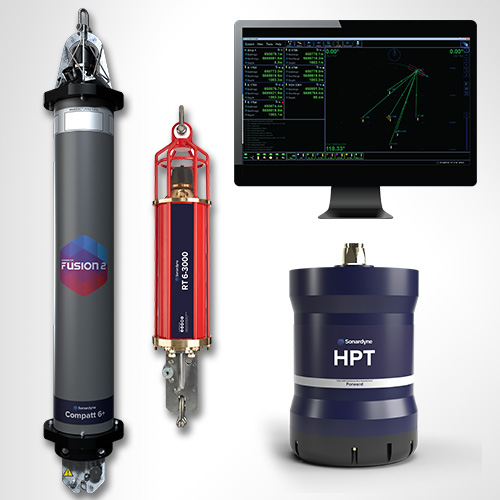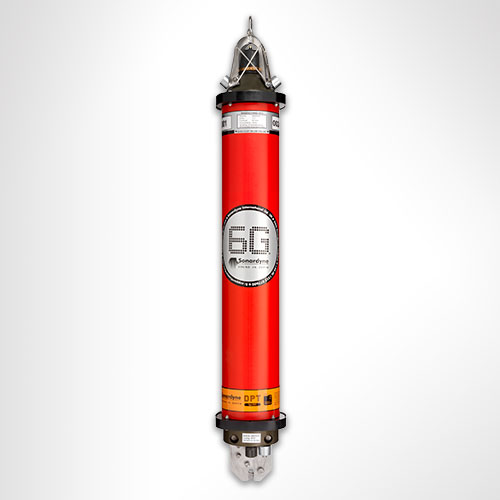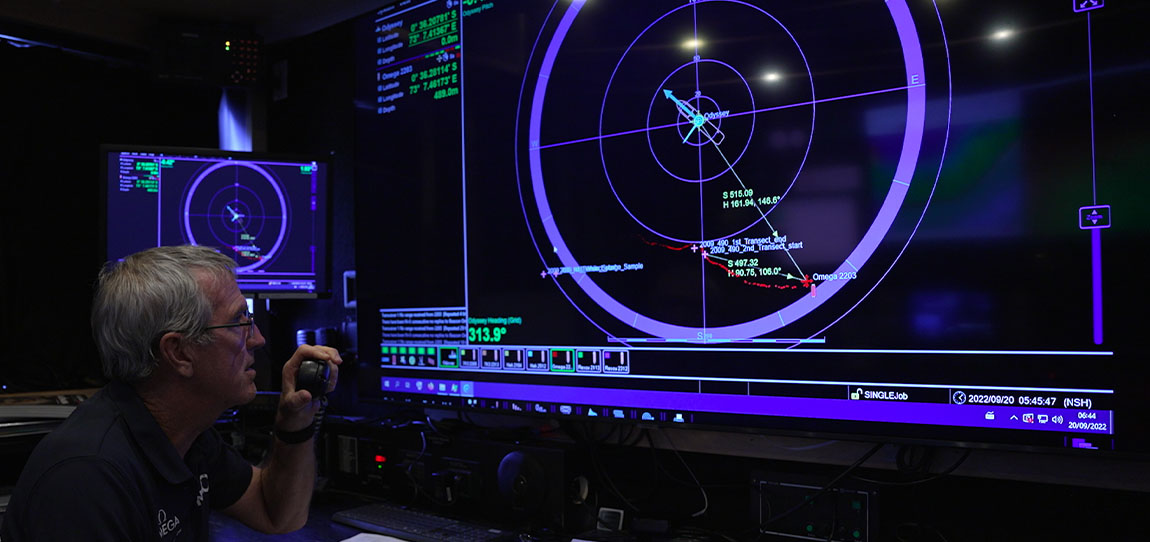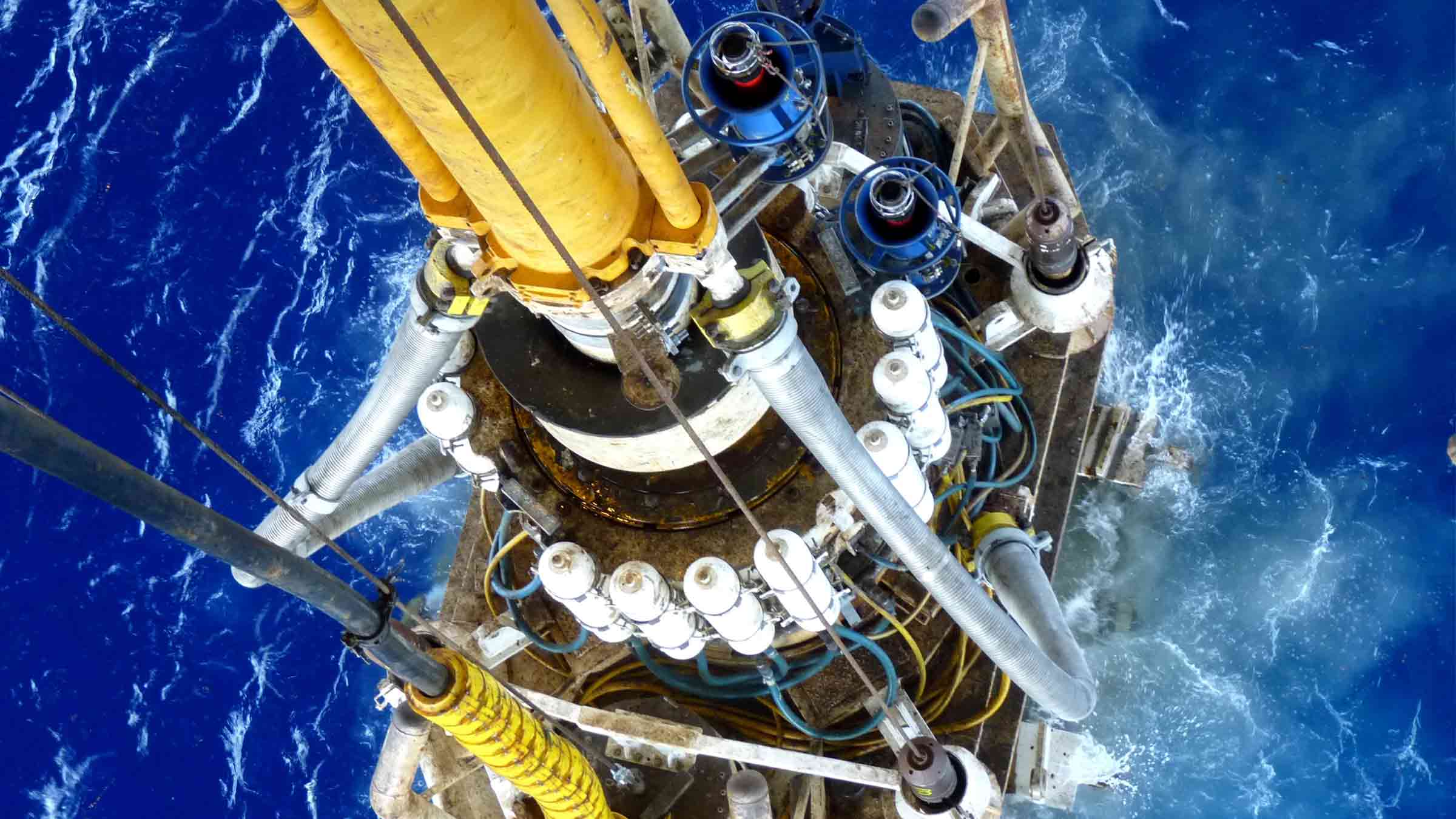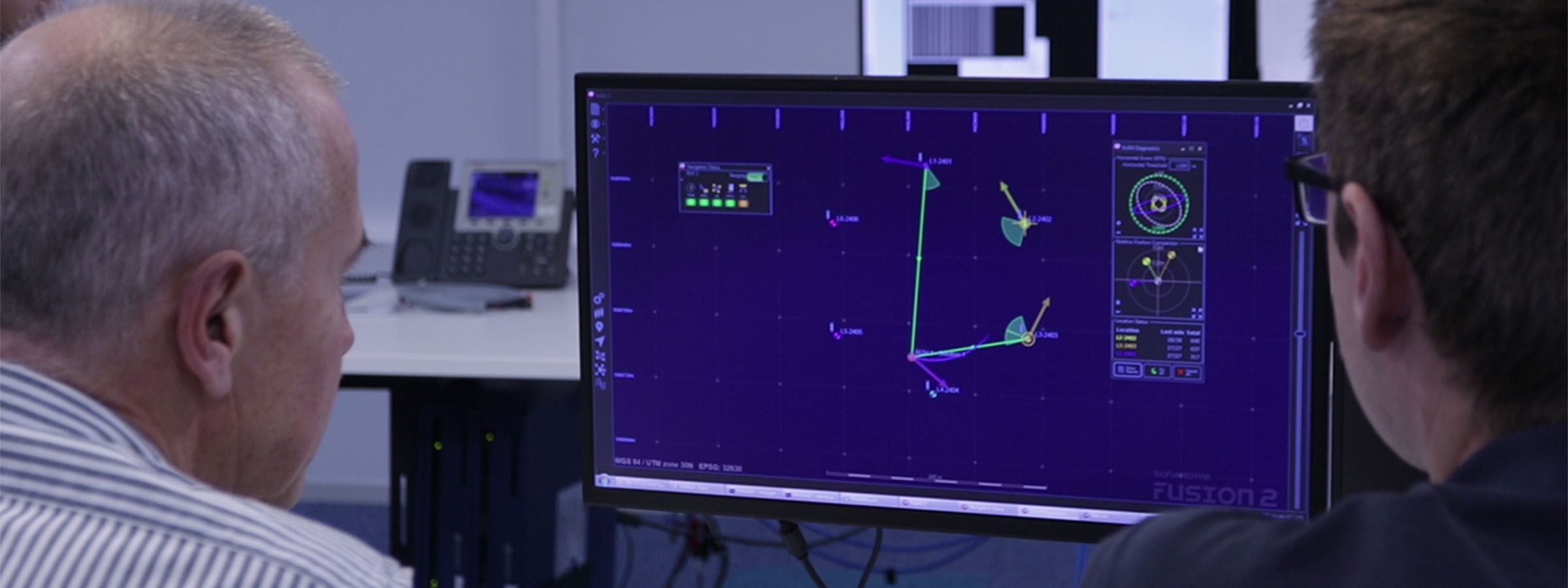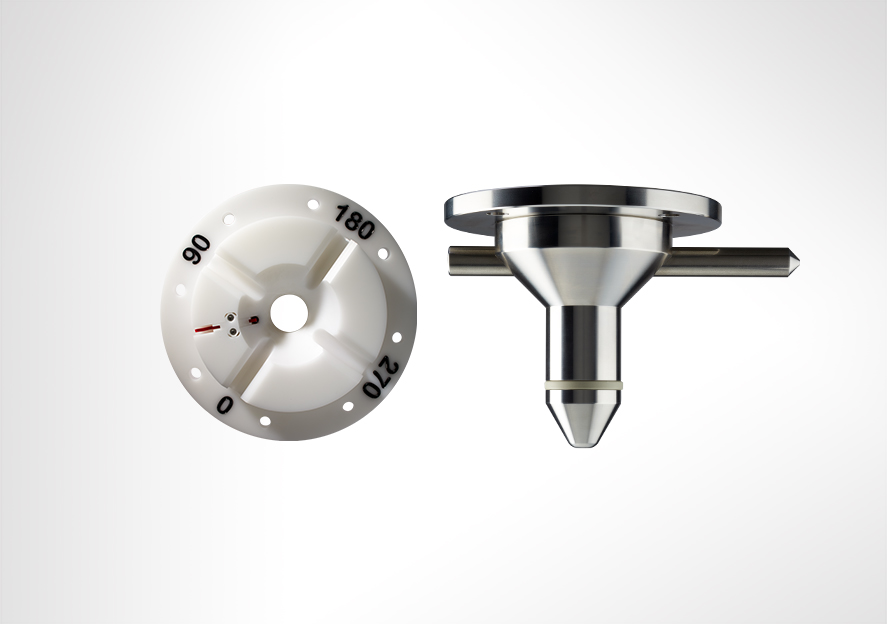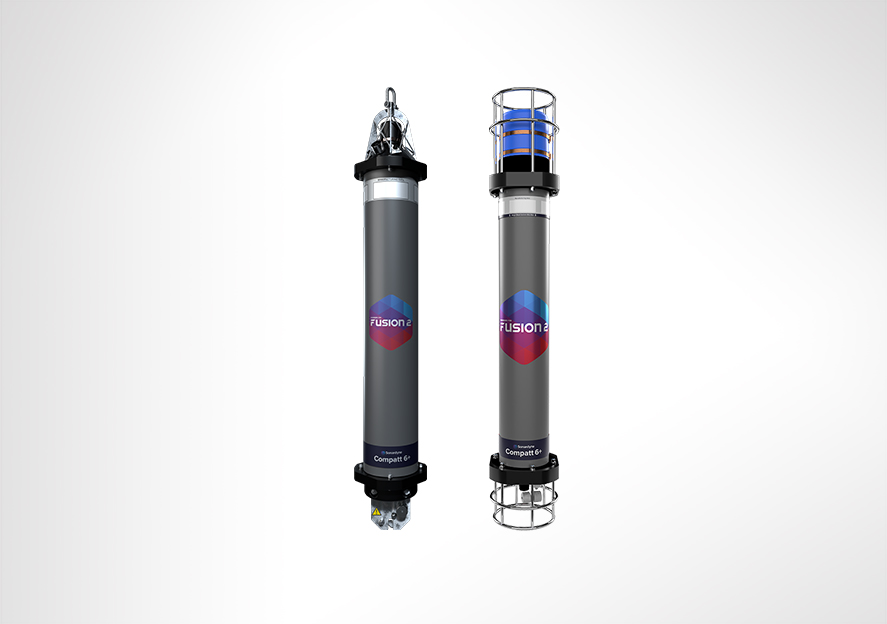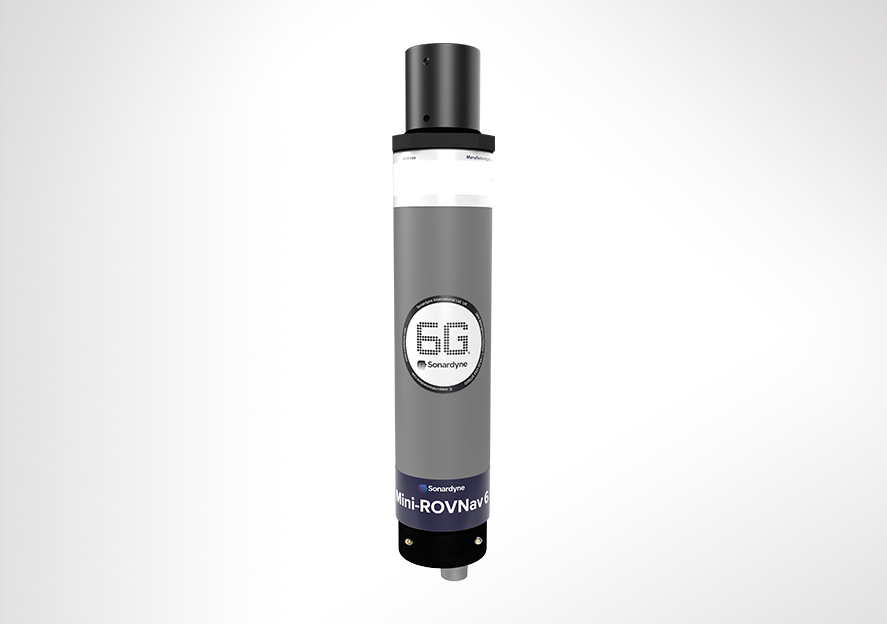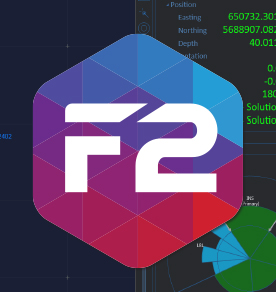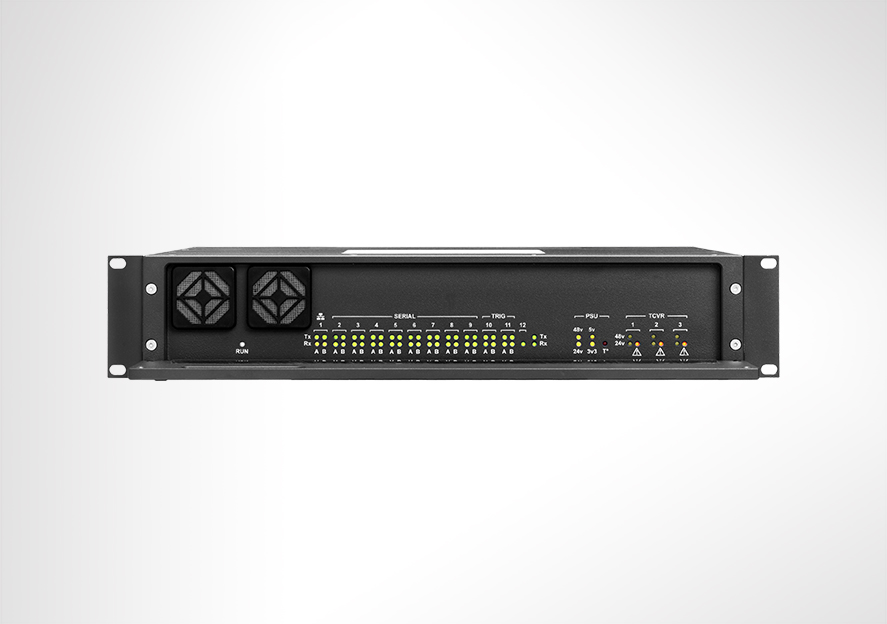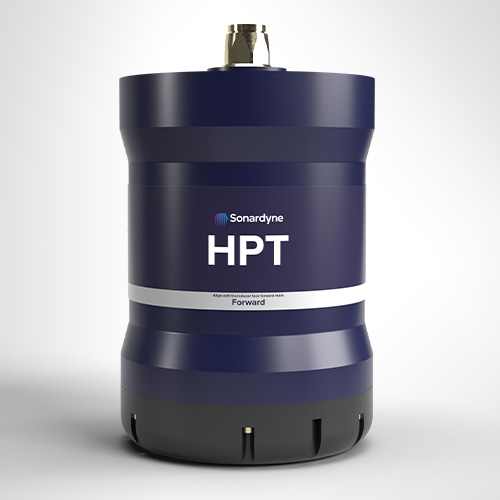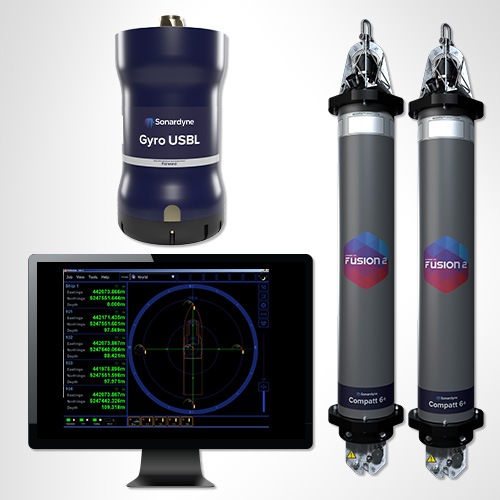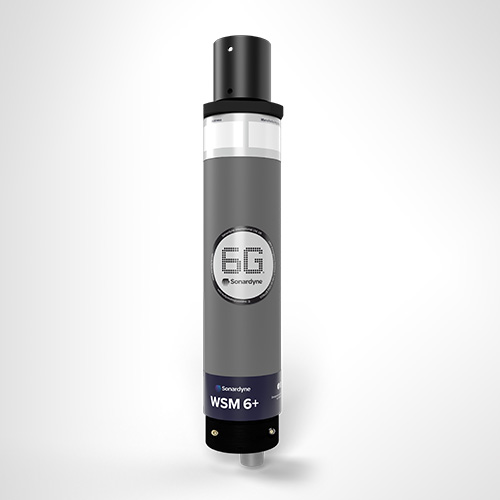Overview
The WGT functionality enables Wave Glider to acoustically collect data from large arrays of seabed instruments in a highly cost-effective manner without the need to deploy a traditional surface ship to perform this operation. Instead, Wave Glider is controlled remotely from a shore station via Iridium satellite communications.
The WGT is capable to be used with directional transducer options for operating in both Medium Frequency (MF) (20-34 kHz) and Lower Medium Frequency (LMF) (12-20 kHz) bands to suit different seabed instruments and is fully Sonardyne Wideband® 2 compatible.
The WGT is tightly integrated into the Wave Glider vehicle communications and power systems thereby providing many of the standard acoustic commands and features associated with Sonardyne 6G® products.
Data is passed by Wave Glider to the Iridium satellite system for onwards transmission to the user in near real time.
At a glance
- Custom engineered for a Wave Glider standard aft payload space
- Provides subsea-surface-shore gateway link for Sonardyne long endurance sensors
- Enables direct remote data collection on demand, monitoring and control from shore based Wave Glider operations centre
- Integrated acoustic modem with data rates from 100 to 9,000 bps
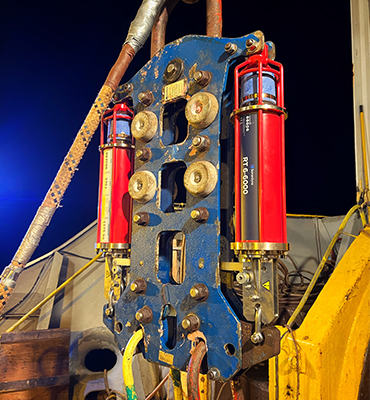
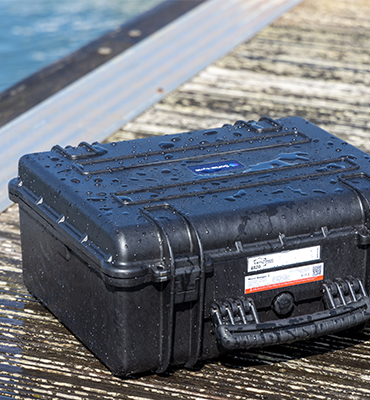

Specifications table
| Feature | Type 8297-010-05 (WGT Module) | Type 8297-010-04 (GPS-A Module) |
|---|---|---|
| Operating frequency | MF (20–34 kHz) | MF (20-34 kHz) |
| Transducer beam shape | Directional | Directional |
| Transmit source level (dB re 1 µPa @ 1 m) | 190–202 dB (4 levels) | 190–202 dB (4 levels) |
| Tone equivalent energy (TEE) | 196–208 dB | 196–208 dB |
| Receive sensitivity (dB re 1 µPa) | 90–120 dB (7 levels) | 90–120 dB (7 levels) |
| Acoustic modem data rates | 100-9,000 bps (6 levels) | 100-9,000 bps (6 levels) |
| Dimensions (length x width x height) | 412 x 389 x 205 mm | 412 x 389 x 205 mm (standard Liquid Robotics 3 MPU) |
| Weight in air/water | 10.4/-15 kg | 10.4/-15 kg |
| Operating temperature | -10 to 45°C | -10 to 45°C |
| Storage temperature | -20 to 55°C | -20 to 55°C |
| Internal backup battery for acoustic modem | Rechargeable Li-ion (2.2 Ah) | Rechargeable Li-ion (2.2 Ah) |
| Satellite communications | Iridium RUDICS (2,400 bps) | Iridium RUDICS (2,400 bps) |
| GNSS receiver | – | Survey grade L1 & L2 receiver: Novatel OEM7720 series (GNSS derived heading) |
| AHRS device | – | XSENS MTi-300 and/or EPSON G320 SPAN INS |
| Ranging clock | – | GPS derived 4 MHz pulse conditioned to 8 MHz |
| Communication and logging: Communications | – | Wi-Fi, RS232 transceiver, RJ45 Ethernet, dedicated power and comms for GNSS and HRP, single RS232 expansion port with 5 V power pass through |
| Communication and logging: Internal logging | 128 GB dual redundant internal memory; RINEX GNSS logging; SPAN INS logging |
|
| System components | WGT Module Wave Glider Payload; 4 m Remote Transducer; Wave Glider Transducer Compatible Skeg |
GPS-A Module Wave Glider Payload; 4 m Remote Transducer; Wave Glider Transducer Compatible Skeg |
Datasheets
Overview
Dynamic Positioning Transponder 6 (DPT 6) supports Wideband 2 acoustic ranging and telemetry providing high accuracy positioning, robust performance in noisy and multi-path conditions and easy set-up and use.
With hundreds of channels, less interference to and from other acoustic systems and multi-user capability, Wideband 2 enables easier SIMOPS vessel capability. These features of the DPT 6 help de-risk subsea operations and save vessel time and cost.
At a glance
- Compatible with HPR systems
- Up to 7,000 m depth rating
- Advanced multi-user/multi-vessel capability
- Robust acoustic performance in noisy conditions
- Real-time diagnostics available on ranges to enable quality control
The DPT 6 is the standard length version and is based on the field proven mechanics of the previous version but with improvements to the end cap closure mechanisms. The design offers the perfect balance between size, acoustic output and battery life. Several depth ratings are available (3,000 m, 5,000 m and 7,000 m) all hard anodised aluminium alloy with protective polyurethane sleeve. Midi (shorter) and maxi (long endurance) options are also available. The DPT is fitted as standard with a highly reliable release mechanism to enable the unit to be deployed in a flotation collar and recovered to the surface without ROV intervention.
The DPT 6 is a midi-sized unit for deep water towfish tracking. Depth rated to 7,000 m, the unit is fitted with a high power super directional transducer. The DPTi 6 is fitted with internal inclinometers to accurately monitor riser angles (see separate datasheet). The unit can also be used with an external inclinometer unit to monitor BOP and flex joint angles.
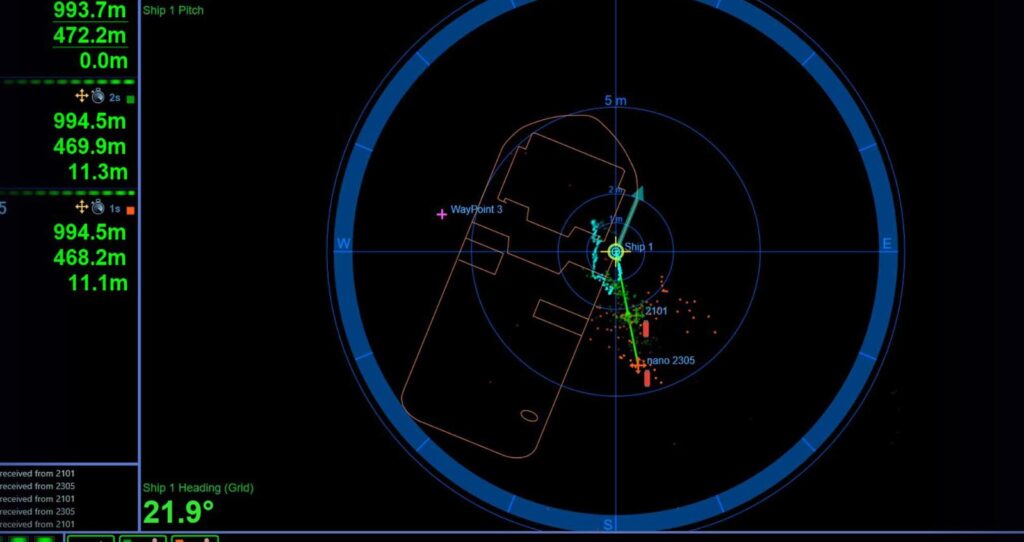

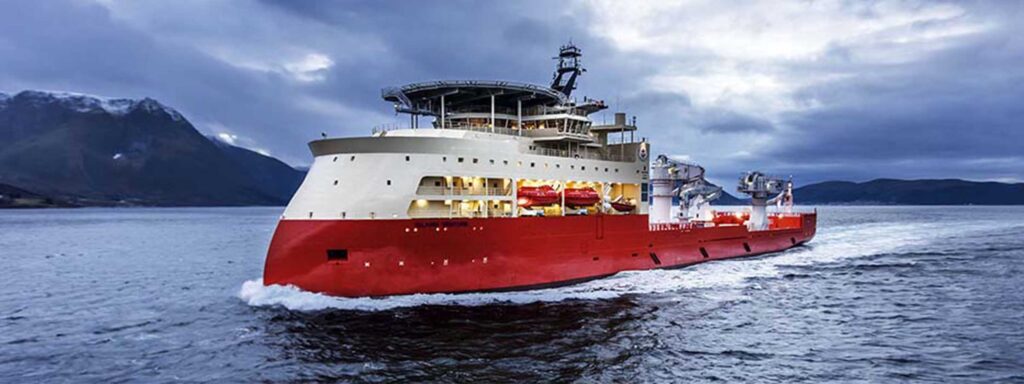
Specifications table
| Feature | Type 8301-3111 | Type 8301-3113 | Type 8301-5213 | Type 8301-7213 | |
|---|---|---|---|---|---|
| Depth Rating | 3,000 m | 3,000 m | 5,000 m | 7,000 m | |
| Operating Frequency | MF (20–34 kHz) | MF (20–34 kHz) | MF (20–34 kHz) | MF (20–34 kHz) | |
| Transducer Beam Shape | Omni-directional | Directional | Directional | Directional | |
| Transmit Source Level (dB re 1 µPa @ 1 m) | 187–196 dB (4 levels) |
190–202 dB (4 levels) |
190–202 dB (4 levels) |
190–202 dB (4 levels) |
|
| Tone Equivalent Energy (TEE) | 193–202 dB | 196–208 dB | 196–208 dB | 196–208 dB | |
| Receive Sensitivity (dB re 1 µPa) | 90–120 dB (7 levels) |
80–120 dB (7 levels) |
80–120 dB (7 levels) |
80–120 dB (7 levels) |
|
| Ranging Precision | Better than 15 mm | Better than 15 mm | Better than 15 mm | Better than 15 mm | |
| Number of Unique Addresses Wideband 1 & 2 | >500 | >500 | >500 | >500 | |
| Battery Life (Listening) | Alkaline | 833 days | 833 days | 833 days | 833 days |
| Lithium | 1,390 days | 1,390 days | 1,390 days | 1,390 days | |
| Safe Working Load (4:1) (Release Mechanism) | 250 kg | 250 kg | 250 kg | 250 kg | |
| Dimensions (Maximum) (Length x Diameter) |
With Sensor Guard | 1,034 x 200 mm | 1,018 x 200 mm | 1,018 x 200 mm | 1,018 x 200 mm |
| Without Sensor Guard | 1,034 x 178 mm | n/a | n/a | n/a | |
| Weight in Air/Water | 23.8/11.8 kg | 27.0/14.0 kg | 29.0/15.0 kg | 33.3/18.8 kg | |
| Endcap Sensors and Options | |||||
| Temperature (±0.1°C) | Standard | Standard | Standard | Standard | |
| Tilt Switch (±30–45°) | Standard | Standard | Standard | Standard | |
| Strain Gauge Pressure Sensor (±0.1%) | Standard | Standard | Standard | Standard | |
| High Precision Strain Gauge (±0.01%) Presens or Keller |
Optional | Optional | Optional | Optional | |
| Paroscientific DigiQuartz Pressure Sensor 1,350 m, 2,000 m, 4,130 m, 6800 m (±0.01%) |
Optional | Optional | Optional | Optional | |
| Inclinometer (Tilt Sensor) Range ±90°, Accuracy: ±1° |
Standard | Standard | Standard | Standard | |
| High Accuracy Inclinometer Range: ±90°, Accuracy: ±0.05° over 0 – ±15°; ±0.2° over 0 – ±45° |
Optional | Optional | Optional | Optional | |
| Sound Velocity Sensor ±0.02 m/s Accuracy Under Calibration Conditions |
Optional | Optional | Optional | Optional | |
| Release Mechanism | Standard | Standard | Standard | Standard |
Frequently asked questions
Software and firmware
Software and control hardware
Technical bulletin
Overview
Its high power output and Wideband 3 signal processing offers improved operating range and acoustic performance in challenging conditions such as when deployed from noisy vessels or in multi-path environments.
The internal Lithium-ion rechargeable battery pack minimises the supply current for long dunker cables. It also enables relocation of the dunker if the cable is cut.
The robust AGP connector on the Dunker 6+ is identical to the ROVNav 6+ and HPT USBL for compatibility and to reduce spares.
At a glance
- Perfect for commanding LBL transponders
- Use it to recover data from Fetch and AMTs
- Capability to operate as topside for RT 6 acoustic releases
- Deploy it over-the-side of your vessel
- Rugged mechanics and connectors
- Shock mounted internal electronics
Dunker 6+ LBL and telemetry transceiver is fully compatible with our modem and sensor logging instruments such as AMT and Fetch , allowing it to be used to retrieve data or configure logging regimes. It can also be used to release the RT 6 range of acoustic releases.
The Dunker 6+ system consists of 100 m of cable on a stainless steel cable drum with brake and locking mechanism. The 10 m deck cable between the 48 V Surface Interface Unit (SIU) and the cable drum allows the drum to be conveniently located. The connection to the cable drum is via an easily replaceable 8-way SubConn.
Optionally, an RT 6 topside kit with 30 m of cable is available in a carrying case without a cable drum.
Specifications table
| Feature | Dunker 6 Type 8309-1351 / Dunker 6+ Omni-directional |
Dunker 6 Type 8309-1353 / Dunker 6+ Directional |
Dunker 6 Type 8309-1355 |
Dunker 6 Type 8309-1356 |
|
|---|---|---|---|---|---|
| Depth rating | 1,000 m | 1,000 m | 1,000 m | 1,000 m | |
| Operating frequency | MF (20–34 kHz) | MF (20–34 kHz) | LMF (14–19 kHz) | LMF (14–19 kHz) | |
| Transducer beam shape | Omni-directional | Directional | Omni-directional | Directional | |
| Transmit source level (dB re 1 µPa @ 1 m) |
187–196 dB (4 levels) |
190–202 dB (4 levels) |
187–196 dB (4 levels) |
187–202 dB (4 levels) |
|
| Tone Equivalent Energy (TEE) | 193–202 dB | 196–208 dB | 193–202 dB | 193–208 dB | |
| Receiver sensitivity (dB re 1 µPa) |
90–120 dB (7 levels) |
80–120 dB (7 levels) |
90–120 dB (7 levels) |
80–120 dB (7 levels) |
|
| Range precision | Better than 15 mm | Better than 15 mm | Better than 15 mm |
Better than 15 mm |
|
| Serial communications (software programmable) |
Primary port: RS485 (half-duplex) or RS232 Secondary port: RS485 (half-duplex) or RS232 or SYNC IN |
Primary port: RS485 (half-duplex) or RS232 Secondary port: RS485 (half-duplex) or RS232 or SYNC IN |
Primary port: RS485 (half-duplex) or RS232 Secondary port: RS485 (half-duplex) or RS232 or SYNC IN |
Primary port: RS485 (half-duplex) or RS232 Secondary port: RS485 (half-duplex) or RS232 or SYNC IN |
|
| Operating voltage | 24 or 48 V dc (±10%) | 24 or 48 V dc (±10%) | 24 or 48 V dc (±10%) | 24 or 48 V dc (±10%) | |
| External power | Active (listening) | <3 W typical (max 6 W when charging) |
<3 W typical (max 6 W when charging) |
<3 W typical (max 6 W when charging) | <3 W typical (max 6 W when charging) |
| Peak (during transmission | <80 W | <80 W | <80 W | <80 W | |
| Battery life Li-ion (listening) | 3 days | 3 days | 3 days | 3 days | |
| Connector type | AGP (8-way female) |
AGP (8-way female) |
AGP (8-way female) |
AGP (8-way female) |
|
| Mechanical construction | Super-duplex stainless steel | Super-duplex stainless steel | Super-duplex stainless steel | Super-duplex stainless steel | |
| Dimensions (length x diameter) |
692 x 200 mm | 660 x 200 mm | 586 x 200 mm | 641 x 230 mm | |
| Weight in air/water | 24/16 kg | 26/17 kg | 20/14 kg | 28/17 kg | |
| System kit | |||||
| Dunker 6, SIU, 100 m cable drum etc. |
602-0047 (8309-1351) |
602-0053 (8309-1353) |
n/a | 602-0072 | |
| Dunker 6+, SIU, 40 m cable drum etc. |
602-0135 (Dunker 6+ Omni-directional) |
602-0198 (Dunker 6+ Directional) |
n/a | n/a |
Frequently asked questions
STP files
Software and firmware
Software and control hardware
Datasheets
Manuals and quick start guides
Did you know?
Dunker 6+ can be used to recover data from Fetch and AMTs
Overview
The ESH is the network interface between the in-water acoustic instrument, GPS and the PC that runs the positioning software.
In addition to accurately time-stamping incoming data from external devices such as gyro, VRU and GPS it provides power and communications for acoustic transceivers.
The ESH includes a time source that can be linked to an internal or external GPS PPS input, allowing the Ranger 2 system to accurately time-stamp incoming data from external devices such as gyro, VRU and GNSS to UTC.
Wi-Fi connectivity allows connection to a PC using a Wi-Fi adapter.
At a glance
- Topside control unit for Mini-Ranger 2 USBL installations
- Provides power and comms to HPT 2000/3000 transceiver
- Integral GNSS with SBAS
- 4 serial ports RS232
- Wi-Fi connectivity
Specifications table
| Feature | Type 8211 |
|---|---|
| Storage | Internal 32 GB eMMC |
| Ports and Connectors | 4 x RS232 ports (DB 9) |
| 3 x RJ45 10/100 Ethernet sockets | |
| 1 x BNC jack 1PPS input | |
| 1 x BNC jack responder output 12 V, 100 mA | |
| 1 x SMA jack GNSS input (RF coaxial) | |
| 1 x Reversed polarity-SMA jack (Wi-Fi) | |
| 1 x 48 V transceiver connector (Amphenol) | |
| 1 x IEC socket 115/230 V ac, 1 A, 60/50 Hz | |
| Power Supply | Auto-sensing ac input voltage: 115–230 V, 60/50 Hz |
| Maximum current: 1 A | |
| Average operating current: 0.16 A @ 230 V (without transceiver) | |
| Environmental Specifications | Operating -5 to 40°C (23 to 104°F) |
| Storage -20 to 55°C (-4 to 131°F) | |
| Relative humidity 20–80% (non-condensing) | |
| Vibration – Frequency 5 to 13.2 Hz – 1.0 mm peak displacement | |
| Vibration – Frequency 13.2 to 100 Hz – 0.7 g acceleration | |
| Vibration – DNVGL-CG-0339 class A | |
| Safety | Complies with EN61010-1 |
| EMC | Complies with immunity & emission requirements of EN60945 |
| Dimensions (Length x Width x Height) 1U Rack Mounting (without feet) |
430 x 295 x 44.4 mm (16.9 x 11.6 x 1.75”) |
| Weight | 3.3 kg (7.3 lbs) |
Datasheets
Manuals and quick start guides
Did you know?
ESH can be used as a topside control unit for Mini-Ranger 2 installations
Overview
HPT 2000 offers significant advantages for survey operations in coastal and near shore regions where simultaneous positioning of transponders attached to transition zone/ocean bottom seismic cables at high elevation tracking is required in low noise environments.
The advanced multi-element processing enables transponders to be positioned more precisely, more quickly and more robustly due to improvements in signal processing algorithms. When used as part of a complete Mini-Ranger 2 USBL system, heading and inertial navigation sensor, class leading performance is achieved.
At a glance
- Use it with Mini-Ranger 2 USBL
- Optimised for high elevation tracking in shallow water
- Easy to deploy on temporary over-the-side set up
- Ethernet comms for fast position updates
- Excellent corrosion resistance
The integral MTi-30 Xsens sensor provides pitch, roll and heading data that automatically compensates for the dynamic motion of the vessel, removing the need for an external sensor and pre-use calibration.
Manufactured in Aluminium Bronze, HPT 2000 is intended to be fitted temporarily or permanently to a vessel’s through-hull or over-the-side pole.
The full hemispherical coverage optimises performance in shallow water environments boosting transmissions and receive sensitivity in the horizontal axis.
Ethernet connectivity enables the system to function over existing ship network wiring for rapid installation.
Discover more from our case studies
A new world of multi-robot ocean exploration
Read moreMini-Ranger 2 for the next-level USV operations
Read moreL3Harris takes USBL-aided AUV navigation to the next level
Read moreSpecifications table
| Feature | Type 8221 | |
|---|---|---|
| Operational frequency | HF (33–50 kHz) | |
| Transceiver performance | Operating range | 500 m |
| Acoustic coverage | Full 180° | |
| Range precision | Better than 15 mm | |
| Positioning repeatability external MRU | All transceivers tested to better than 0.2% of slant range 1 Drms / 0.14% 1 Sigma | |
| Positioning repeatability internal Xsens pitch and roll | All transceivers tested to better than 1.3% of slant range 1 Drms / 0.9% 1 Sigma | |
| source level (dB re 1 µPa @ 1 m) | 194 dB | |
| Electrical | 48 V dc (±10%), typical 15 W, maximum 120 W | |
| Communication | Ethernet 100 Mbps | |
| Operating temperature | -5 to 40°C | |
| Storage temperature | -20 to 45°C | |
| Mechanical construction | Aluminium bronze | |
| Dimensions (height x diameter) | 310 x 234 mm | |
| Weight in air/water | 19.4/9.5 kg | |
| Note: The absolute accuracy of the system is dependent upon the quality of external attitude and heading sensors, beacon source level, vessel noise, water depth, mechanical rigidity of the transceiver deployment machine, SV knowledge and proper calibration of the total system using CASIUS. |
Frequently asked questions
How to clean a transceiver array face
HF Beacon Positioning for Transition Zone and Ocean Bottom Cable Applications
HPT 2000/3000 Testing
Has anyone ever installed an echosounder and Ranger 2 USBL transceiver directly beside each other? Would this work?
Does the HPT’s main connector need any maintenance?
STP files
Software and firmware
Software and control hardware
Datasheets
Manuals and quick start guides
Did you know?
HPT 2000 can be used as part of our Mini-Ranger 2 USBL system
Overview
When it comes to USBL and LUSBL transceivers, one model does not fit all situations and vessels. For Ranger 2 and Marksman installations, our High Performance Transceiver (HPT) is available two primary configurations.
HPT 5000
HPT 5000 offers full hemispherical acoustic coverage so it’s a popular choice for tracking multiple targets (ROVs, AUVs, towfish, seafloor sensors) over a wide range of depths and elevations. The unit is also suitable for dynamic positioning reference on survey, research and offshore support vessels.
HPT 7000
HPT 7000 is engineered for ultra-deepwater operations, tracking targets far below (rather than to the side) of a vessel, and also high vessel noise operating environments, as those typically encountered on DP drilling and construction where aeration from thrusters is liable to cause signal interference.
Both models of transceiver fully support 6G LBL operations using Fusion 2 LBL software. They are also highly capable acoustic communications modems, able to interrogate, command and recover data payloads from deployed Sonardyne instruments including AMTs and Fetch. Supporting telemetry rates of up to 9,000 bps minimises the time a vessel has to wait on location to recover data, as well as supporting LBL operations.
HPT 5000/7000s are also available in Gyro USBL configurations offering calibration-free installation and use.
At a glance
- Use with Ranger 2 USBL and Marksman LUSBL systems
- Can also be used to communicate and harvest data from Sonardyne sensors
- Hemispherical (HPT 5000) or directional (HPT 7000) arrays to suit your vessel and application
- Can be deployed other-the-side, through-tube or through-hull
- Suitable for new-build vessels or USBL/LUBL upgrade for your existing vessel
All HPTs are built on our 6G technology platform with multi-element processing to enable transponders to be positioned more precisely, more quickly and more robustly due to improvements in signal processing algorithms and array design.
Functionality such as ‘Discovery Mode’ enables vessels equipped with Ranger 2 and Marksman to enter an offshore area and automatically detect previously deployed transponders (including their configured address and channel), making simultaneous operations using shared seabed arrays possible.
Manufactured in aluminium-bronze, HPTs are intended to be fitted temporarily or permanently to a vessel’s through-hull or over-the-side pole. HPT 5000s (including Gyro USBL 5000s) have also been fitted to large USVs for uncrewed missions controlled from over-the-horizon.
For specialist applications, inverted USBL, LMF frequency and extreme depth range HPT transceivers are also available. Please get in contact to discuss your requirements.
Ranger 2 in action
Optimising shallow water positioning for combined magnetometer and hydrographic surveys
Read moreAutonomous robots prepare to storm the ocean depths
Autonomous robots prepare to storm the ocean depths
A new world of multi-robot ocean exploration
Read moreSpecifications table
level, vessel noise, water depth, mechanical rigidity of the transceiver deployment machine, SV knowledge and proper calibration of
the total system using CASIUS.
| Feature | Type 8142-001 | Type 8142-002 (deepwater optimised unit) | |
|---|---|---|---|
| Operational frequency | MF (20–34 kHz) | MF (20–34 kHz) | |
| Transceiver performance |
Operating range | Up to 7,000 m | Up to 7,000 m |
| Acoustic coverage | Up to ± 90° | Up to ± 90º Optimised for deep water (depending on frequency of operation) |
|
| Range precision | Better than 15 mm | Better than 15 mm | |
| Positioning repeatability | All transceivers tested to better than 0.1% of slant range 1 Drms | All transceivers tested to better than 0.07% of slant range 1 Drms | |
| Transmit source level (dB re 1 µPa @ 1 m) | 200 dB | 200 dB | |
| Tone Equivalent Energy (TEE) | 206 dB (13 JA) | 206 dB (13 JA) | |
| Electrical | 48 V dc (±10%), Typical 15 W, Max 120 W |
48 V dc (±10%), Typical 15 W, Max 120 W |
|
| Communication | RS485, baud rate switchable, ethernet 100 Mbps |
RS485, baud rate switchable, ethernet 100 Mbps |
|
| Operating temperature | -5 to 40°C | -5 to 40°C | |
| Storage temperature | -20 to 45°C | -20 to 45°C | |
| Mechanical construction | Aluminium bronze | Aluminium bronze | |
| Dimensions (length x diameter) | 322 x 225 mm | 391 x 310 mm | |
| Weight in air/water | 26.7/15.3 kg | 46.9/29.0 kg | |
| Options | Tilted array adaptor | Tilted array adaptor |
Frequently asked questions
How to clean a transceiver array face
How to enter Transceiver & Lodestar Offsets for Optimised USBL
HPT Deployment Tests
Has anyone ever installed an echosounder and Ranger 2 USBL transceiver directly beside each other? Would this work?
How do USBLs work?
Does the HPT’s main connector need any maintenance?
When to use Depth Aiding
What acoustic address should I use for my USBL transponder
How to interface Ranger 2 into a 3rd party survey system
STP files
Software and firmware
Software and control hardware
Datasheets
Did you know?
Both HPT 5000 and 7000 are available in Gyro USBL configurations
Overview
Using a superfast processor to handle intensive workloads, Marine Computer is designed and configured to provide you with the best possible experience when using our suite of navigation, positioning and imaging software products, leaving you to concentrate on the job in hand.
However, you don’t have to be using Sonardyne software to use one. If you’re in the market for a robust and easily configured computer to run third-party software applications onboard your ship, survey boat or unmanned craft, Marine Computer is the perfect choice.
That’s because it’s certified to EN60945 and DNVGL-CG-0339 standards which means it meets regulatory requirements to be used on ships’ bridges and is able to withstand harsh operating environments and where constant high temperatures are present.
At a glance
- Choice of desktop or 2U rack mount configurations
- Fanless and temperature tolerant design withstands harsh marine operating environments
- Certified to EN 60945 and DNVGL-CG-0339 – use it on your bridge
- Intel 8th generation CPU runs intensive applications with ease
- Desk, console and rack mounting options
- Wide operating temperature range
Fanless computers like the Marine Computer are perfect for use in dirty or dusty marine environments where actively cooled systems could quickly clog up, overheat and fail. Inside is an Intel 8th generation processor and 512 GB industrial grade solid state disk. SSDs have no moving parts so are faster and more reliable than traditional hard disk drives. Temperature tolerant components contribute to its impressive wide operating temperature range.
All this makes the Marine Computer an extremely versatile and reliable tool in virtually any marine installation condition: desk mounted, in a small survey boat; within a ship’s bridge console; or, when supplied with a custom 2U chassis, mounted in a server room rack.
Watch our youtube video to learn more

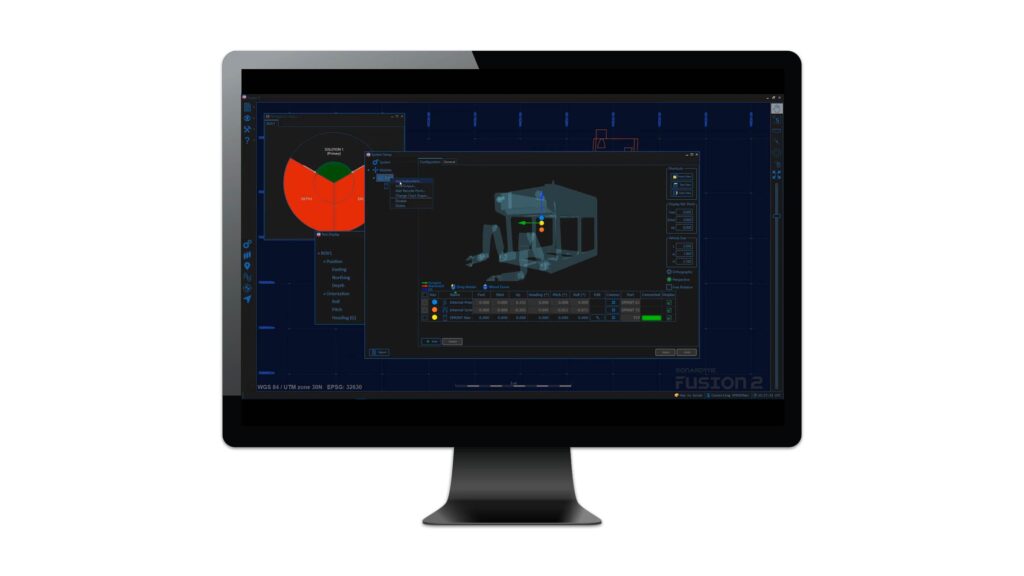
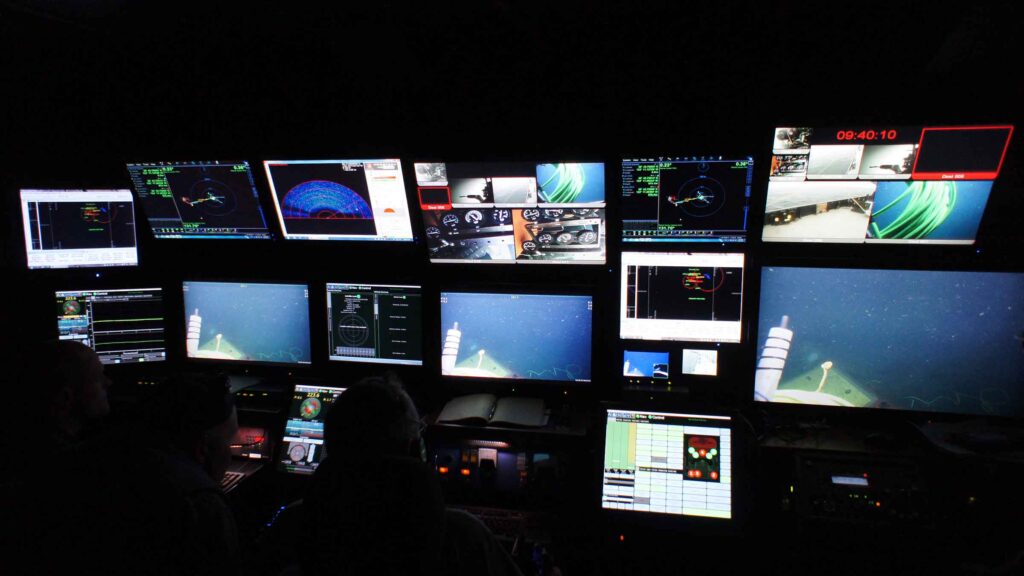
Specifications table
| Feature | Specification | |
|---|---|---|
| Processor | Intel i7 8700T Hexacore 2.4 GHz | |
| RAM | 8 GB 2666 MHz DDR4 RAM (non-ECC, un-buffered) |
|
| Hard drive | Single 512 GB industrial grade SSD | |
| Drives | Additional 2.5” SATA drive bay | |
| Ports | 1x DVI, 2 x DisplayPort 1.2, 2x USB 3.1 Gen2, 4x USB 3.0, 2x USB 2.0, 4 x RS232/422/485 serial ports (with auto flow control), 1x PS2 port, 1x Line in, 1x Mic in, 1x Phone jack 3.5mm, External Fan port, external power port, external reset port |
|
| Network | 2x 1 Gbps Ethernet | |
| Power in | Auto sensing ac voltage: 115/230 V, 60/50 Hz Max power input: 221 W Input current: 2 A @ 230 V |
|
| Audio | Realtek® ALC888 high definition audio | |
| Video | Supports triple independent display | |
| Environmental specifications | Operating temperature, storage temperature, relative humidity Vibration Shock |
-15 to 70ºC (5 to 158°F) -15 to 70ºC (5 to 158°F) 95% @ 70°C (non-condensing) 5 Grms, 5–500 Hz, 3 axes according to IEC60068-2-64 50 Grms, half-sine 11 ms duration according to IEC60068-2-27 |
| Intended use | Indoor use (including bridge), altitude up to 2,000 m, continuous operation | |
| EMC | Immunity & Emission EN 60945 & DNVGL-CG-0339 compliant |
|
| Dimensions (WxDxH) | Unmounted | 227 x 261 x 88 mm (8.9 x 10.3 x 3.5”) |
| Shelf mounted | 482 x 423 x 88 mm (19.0 x 16.7 x 3.5”) | |
| Weight | Unmounted | 4.3 kg |
| Shelf mounted | 10.5 kg | |
| Options | 265-5831 | 512 GB SSD |
| 650-0219 | Connector pack (1x dc power terminator, 1x SW reset terminator, 1x reset terminator, 1x fan terminator) |
Frequently asked questions
Datasheets
Manuals and quick start guides
Technical bulletin
Overview
With a high manufacturing tolerance combined with a pop-up ‘tell-tale’ flag that provides visual confirmation the transponder is precisely docked, our stab and receptacle saves times and improves the accuracy of subsea construction.
Using our stab and receptacle, the traditional method of rotating of a stab in a hub during metrology operations to determine stab-to-receptacle slop, can be eliminated. With this time consuming task removed, acoustic metrologies have the potential to be completed in less than six hours.
The tolerance of the design allows for 0.1° for heading and 0.01° for pitch/roll which is the same quoted error of a calibrated Gyro Compatt 6. This improves the results of the metrology or other positioning tasks and reduces the need for error determination of the stab/receptacle.
At a glance
- Allows you to accurately align transponders on structures
- Perfect for installation during metrology campaigns
- Allows transponders to be quickly removed and re-installed using ROV
- Two stab variants available to bolt onto either Inclinometer Compatts or Gyro Compatts
- Can be fitted on the back deck using existing hole patterns
- Tell-tale indicator confirms the stab is fully docked into the receptacle
The receptacle is designed to bolt into the eight bolt hole pattern of the industry standard 8” AWWA Class D flange. This allows the user to either bolt this flange onto the structure or to provide bolt holes in the structure itself. After dimensional control techniques to determine the relationship of the bolt holes in relation to the structure points of interest (jumper hubs, CRP, spool flanges, etc), the receptacle can be bolted in with known offsets to these points. This allows fast and precise inferred metrology to one or multiple hubs or flanges from a single receptacle.
The receptacle features a 45° cone in which the stab sits. This reduces the possibility of debris building up on the interface between the two and allows for a more precise connection due to the point of contact being exactly circular regardless of any small expansion/contraction effects.
The stab also features an alignment bar rather than alignment pins to aid docking and provide superior heading alignment. An O-ring on the stab shaft assists in ensuring the two are precisely mated.
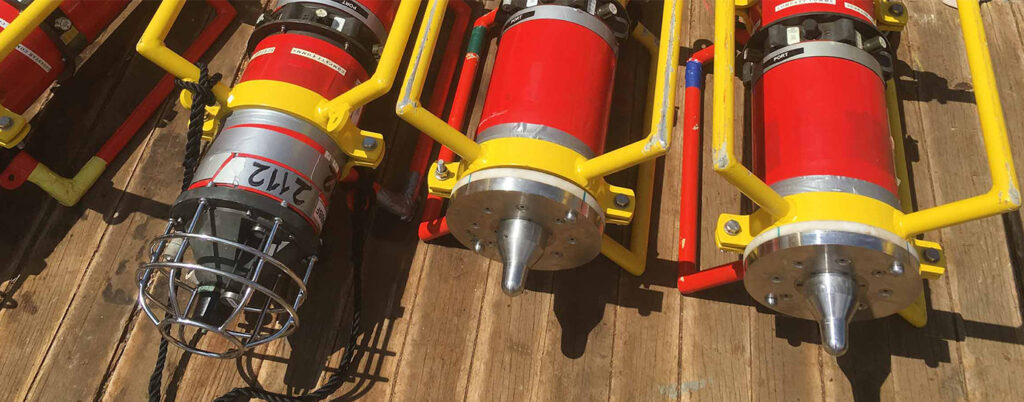
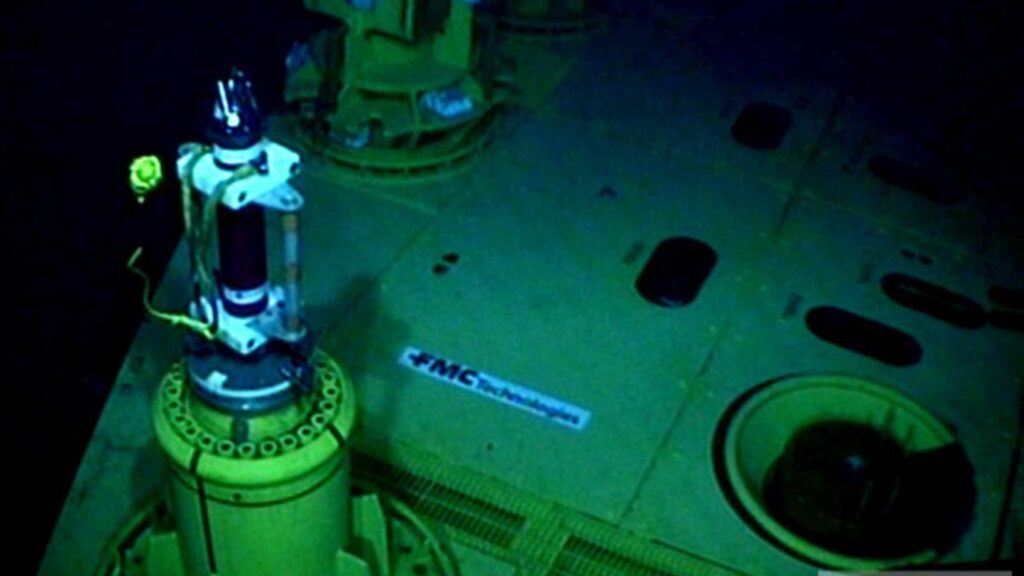
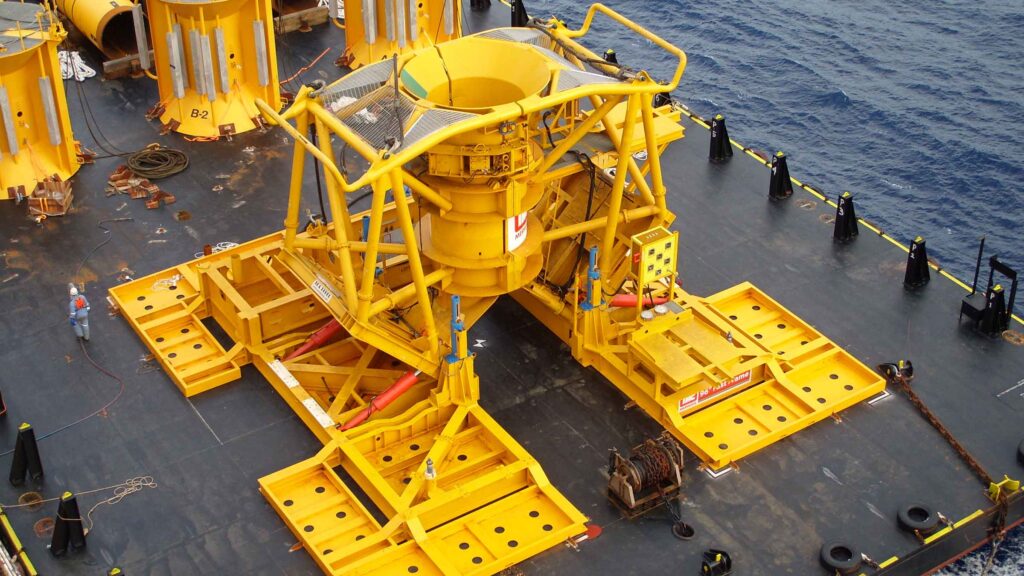
Specifications table
| Feature | Receptacle Type 8300-250 | Stab Type 8300-240 | Stab Type 8144-150 |
|---|---|---|---|
| Compatible Products | Stab 8300-240 & 8144-150 | Inclinometer Compatt 5 & 6 | Gyro Compatt 6 |
| Outside Diameter | 343 mm | 185 mm | 185 mm |
| Maximum Height | 100 mm | 164 mm | 164 mm |
| Stab face to Flange Face | 76 mm | 76 mm | 76 mm |
| Mechanical Construction | Acetal (Delrin) | Super duplex stainless steel | Super duplex stainless steel |
| Bolt Hole PCD | 298.45 mm | n/a | n/a |
| Tell-tale | Removable | n/a | n/a |
| Attitude Tolerance | Heading 0.1°, Pitch / Roll 0.01° | Heading 0.1°, Pitch / Roll 0.01° | Heading 0.1°, Pitch / Roll 0.01° |
| Alignment Quadrants | Four (0°, 90°, 180°, 270°) | Four (0°, 90°, 180°, 270°) | Four (0°, 90°, 180°, 270°) |
Datasheets
Did you know?
There are two stab variants available to be used with either Compatts or Gyro Compatts
Overview
Mini-ROVNav 6+ is designed to be significantly lighter and smaller than our standard ROVNav 6+ instrument, whilst providing full 6G LBL capabilities.
This makes it particularly suitable for inspection-class ROVs as well now uncrewed surface vessels (USVs) which can be configured to undertake routine LBL operations over-the-horizon from your survey vessel.
Its full support of Wideband 2 signal processing techniques offers long range and robust acoustic performance in challenging conditions such as on noisy vehicles or in multi-path environments.
At a glance
- Use it with Fusion 2
- Perfect when ROV space is limited
- USBL mode for emergency relocation
- Lightweight and easy to install
- Modem mode for data recovery from AMTs and Fetch instruments
Mini-ROVNav 6+ is also a fully compatible USBL responder or transponder compatible with Sonardyne Wideband 1 and 2 USBL systems and HPR 400. The internal Li-ion rechargeable battery pack also enables emergency transponder mode, so if the umbilical and therefore power is cut to the ROV it can still be located using a vessel equipped with a USBL system.
The integrated omni-directional MF transducer has a hemispherical beam pattern which is ideal for acoustics to an array and to a vessel alike.
Mini-ROVNav 6+ is fully compatible with our modem and logging equipment such as AMT and Fetch products, allowing it to be used to retrieve data or configure logging regimes. Data rates of between 100 to 9,000 bps user data rates can be supported depending on the environment.
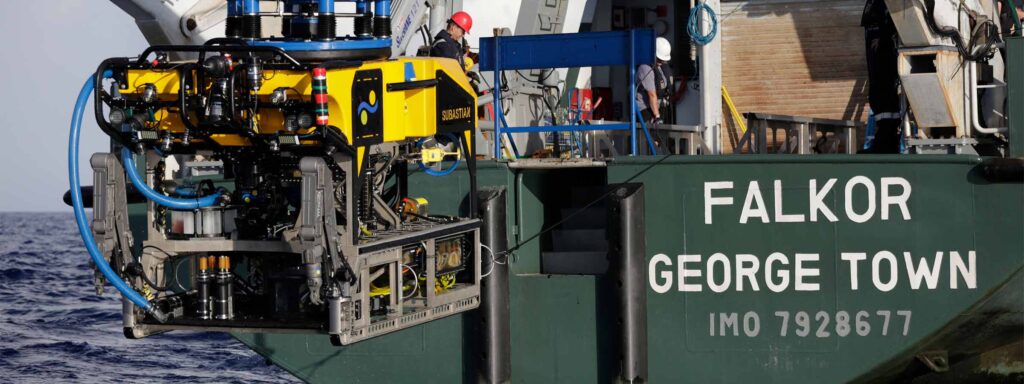
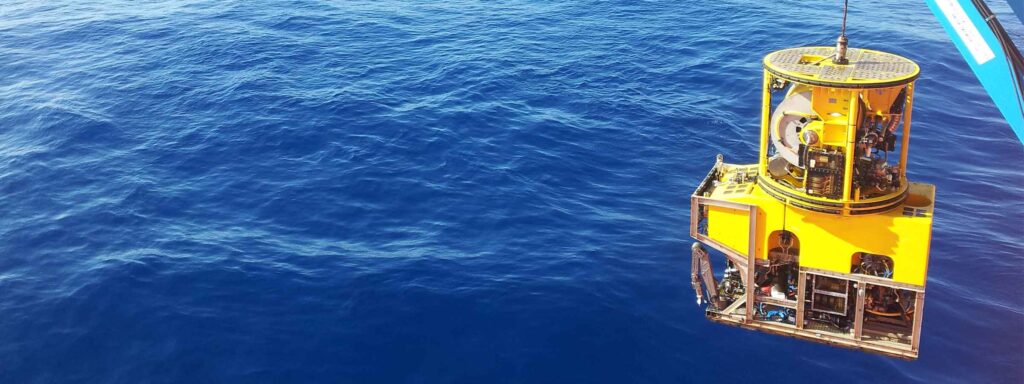
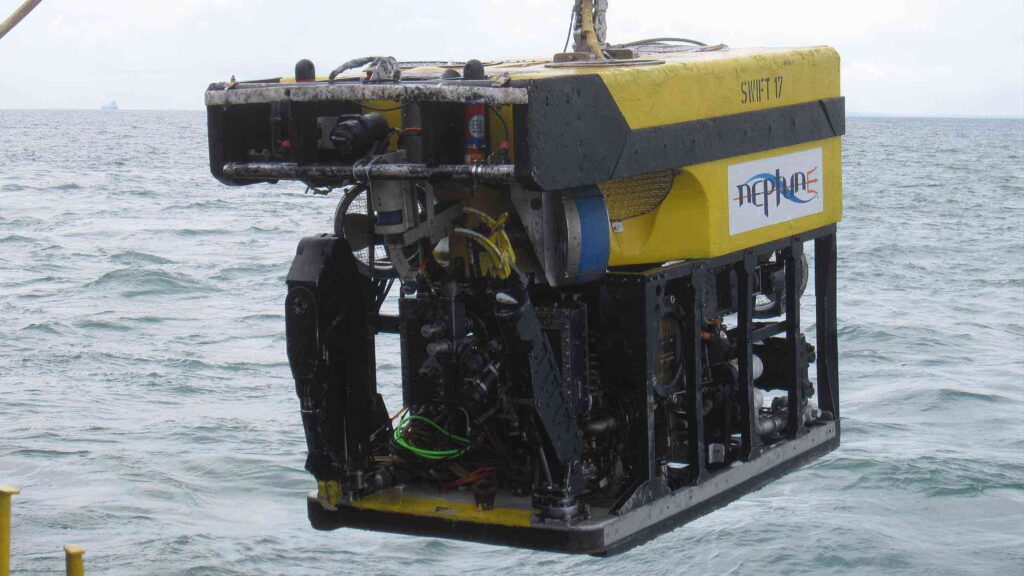
Specifications table
| Feature | Type 8240 | |
|---|---|---|
| Depth rating | 3,000 m | |
| Operating frequency | MF (20–34 kHz) | |
| Transducer beam shape | Omni-directional | |
| Transmit source level (dB re 1 µPa @ 1 m) | 181–187 dB (2 levels) |
|
| Tone Equivalent Energy (TEE) | 187–193 dB | |
| Receiver sensitivity (dB re 1 µPa) | 90–120 dB | |
| Range precision | Better than 15 mm | |
| Operating voltage | 24 or 48 V dc (±10%) | |
| Serial communications | Primary port: RS232 (9,600 – 115,200 baud) | |
| Responder input | 4 V to 24 V, >0.5 ms duration |
|
| Release output | 12 V (250 mA rated) |
|
| Battery life (listening) Li-ion | >7 days | |
| External power | Active (listening) | <2 W |
| Battery charging | <6 W | |
| Peak (during transmission) | <50 W | |
| Mechanical construction | Hard anodised aluminium alloy and stainless steel connectors | |
| Serial communications bulkhead connector | MCBH8M | |
| Dimensions (length x maximum diameter) | 501 x 93.5 mm | |
| Weight in air/water | 5.1/2.2 kg | |
| Operating temperature | -5 to 40°C | |
| Storage temperature | -20 to 55°C | |
| Sensors | ||
| Temperature (±0.25°C) | Standard | |
| Strain gauge pressure sensor (±0.25% FS) | Standard |
Frequently asked questions
Software and firmware
Datasheets
Did you know?
Mini ROVNav 6+ can be used with Fusion 2 software
Overview
NSH is a 2U high rack-mounted unit that is the interface between your in-water deployed transponders, vessel-mounted transceiver and Marine Computer which runs Ranger 2 USBL or Marksman LUSBL software applications.
In addition to accurately time-stamping incoming data from external devices such as gyro, VRU and GNSS, the NSH also provides power and communications for ship-borne acoustic transceivers such as HPT 5000 or HPT 7000.
A range of hardware interface cards are available for interfacing Sonardyne transceivers and external sensors. By simply plugging these cards into the rear of the unit, the role of the Navigation Sensor Hub can be transformed from supporting simple to complex acoustic operations.
The NSH includes an IEEE-1588/PTP precision time source that can be linked to GPS PPS input. Multiple NSHs automatically synchronise their clocks. All incoming data is time stamped to sub-microsecond accuracy – outgoing transmissions and triggers can be scheduled to the same precision.
Depending on the application (DP, drilling or survey operations), the NSH can be configured in stand-alone, dual-independent or dual-redundant modes.
At a glance
- Use it with Ranger 2 and Marksman LUSBL systems
- Interfaces vessel’s acoustic instruments with operating software
- Time stamps gyro, VRU and GNSS data
- Offers up to 16 serial ports (RS232/485)
- Configurable for dual independent applications
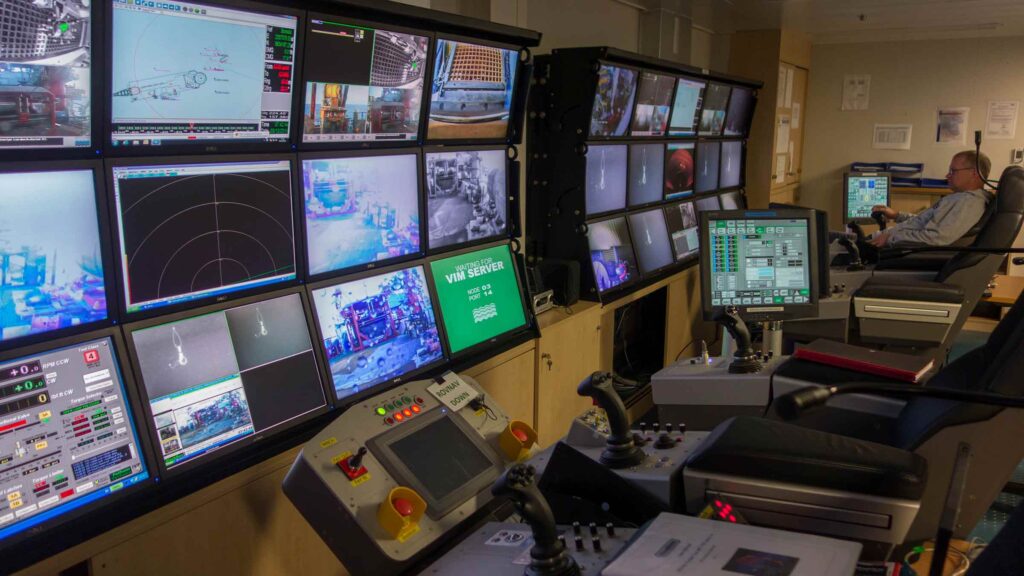

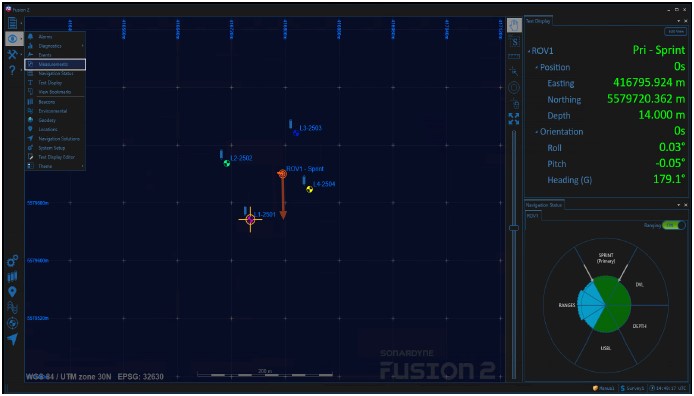
Specifications
| Feature | Type 8098 | |
|---|---|---|
| Processor | Freescale PowerQUICC™ II Pro Processor running at 1000 MIPS | |
| Memory | One single SO-CDIMM DDR2 PC4200 512MB Module | |
| Motherboard | Proprietary Sonardyne Type 8098-046 | |
| Ports and Connectors | AC IEC power connector socket | |
| 12 x Interface card connectors | ||
| Power Supply | Auto sensing ac input voltage: 100-240 V, 50/60 Hz | |
| Max current: 2 A @ 240 V, 4 A @ 110 V | ||
| Ave. operating current: 0.32 A @ 240 V | ||
| Environmental Specifications | Operating | -5 to 40°C (23 to 104°F) |
| Storage | -20 to 55°C (-4 to 131° F) | |
| Relative Humidity | 20–80% (non-condensing) | |
| Shock | 10 G acceleration peak to peak | |
| 5–17 Hz, 0.1” double amplitude displacement | ||
| 17–640 Hz, 1.5 G acceleration peak to peak | ||
| Safety | Complies with EN61010-1 | |
| EMC | Complies with Immunity & Emission requirements of EN60945 | |
| Dimensions (Length x Width x Height) | 384 x 482 x 88 mm (15.1 x 18.9 x 3.4”) |
Frequently asked questions
Software and firmware
Software and control hardware
Datasheets
Manuals and quick start guides
Did you know?
NSH can be used with Ranger 2 and Marksman LUSBL systems
